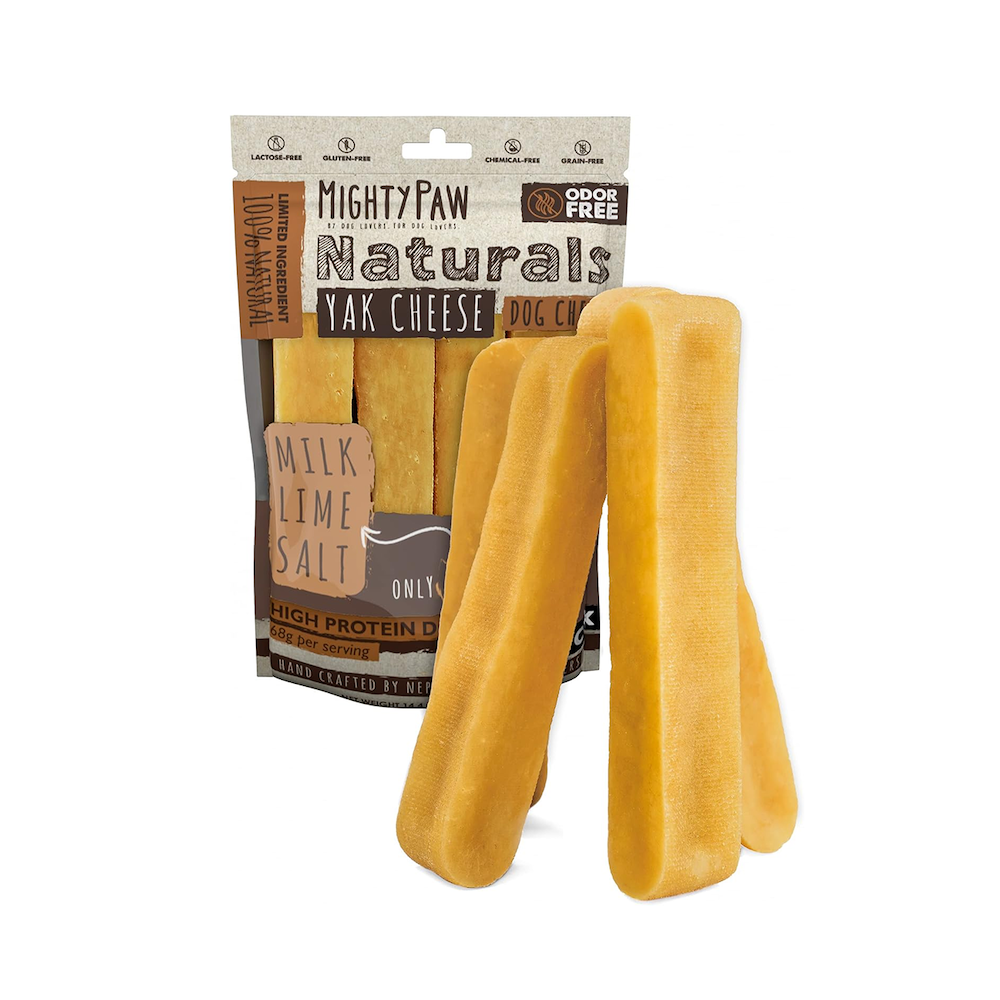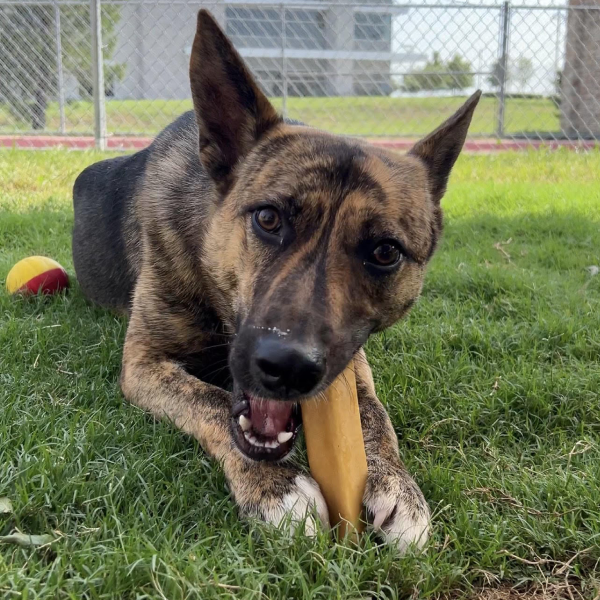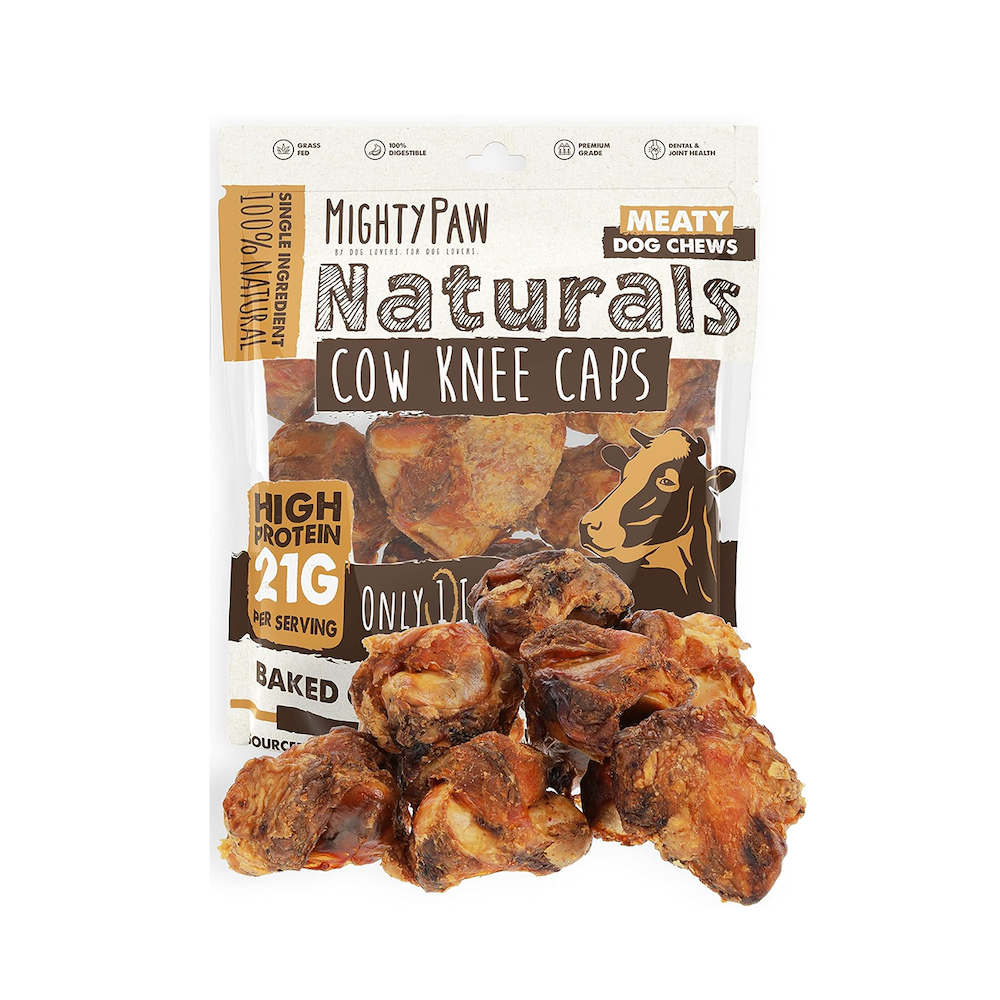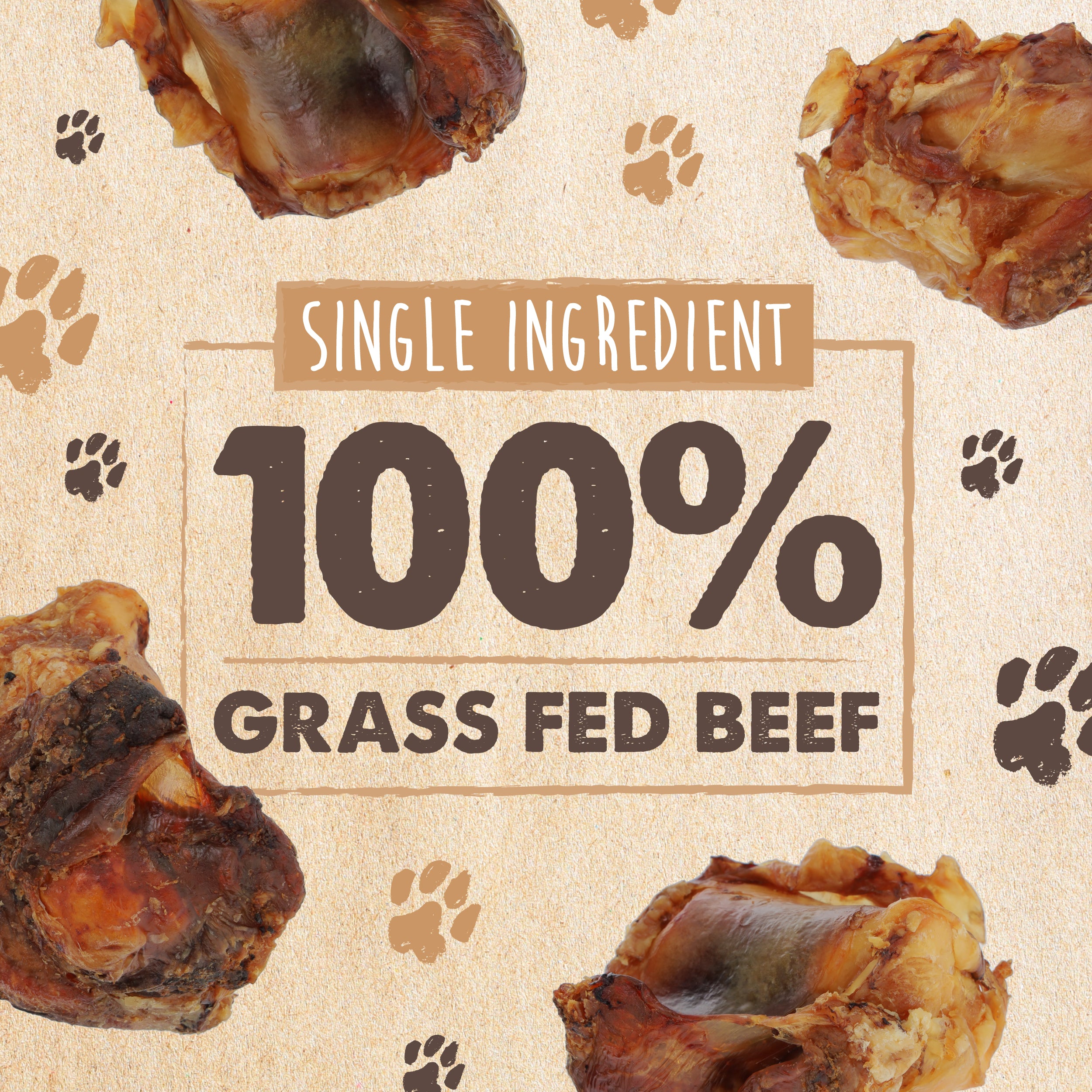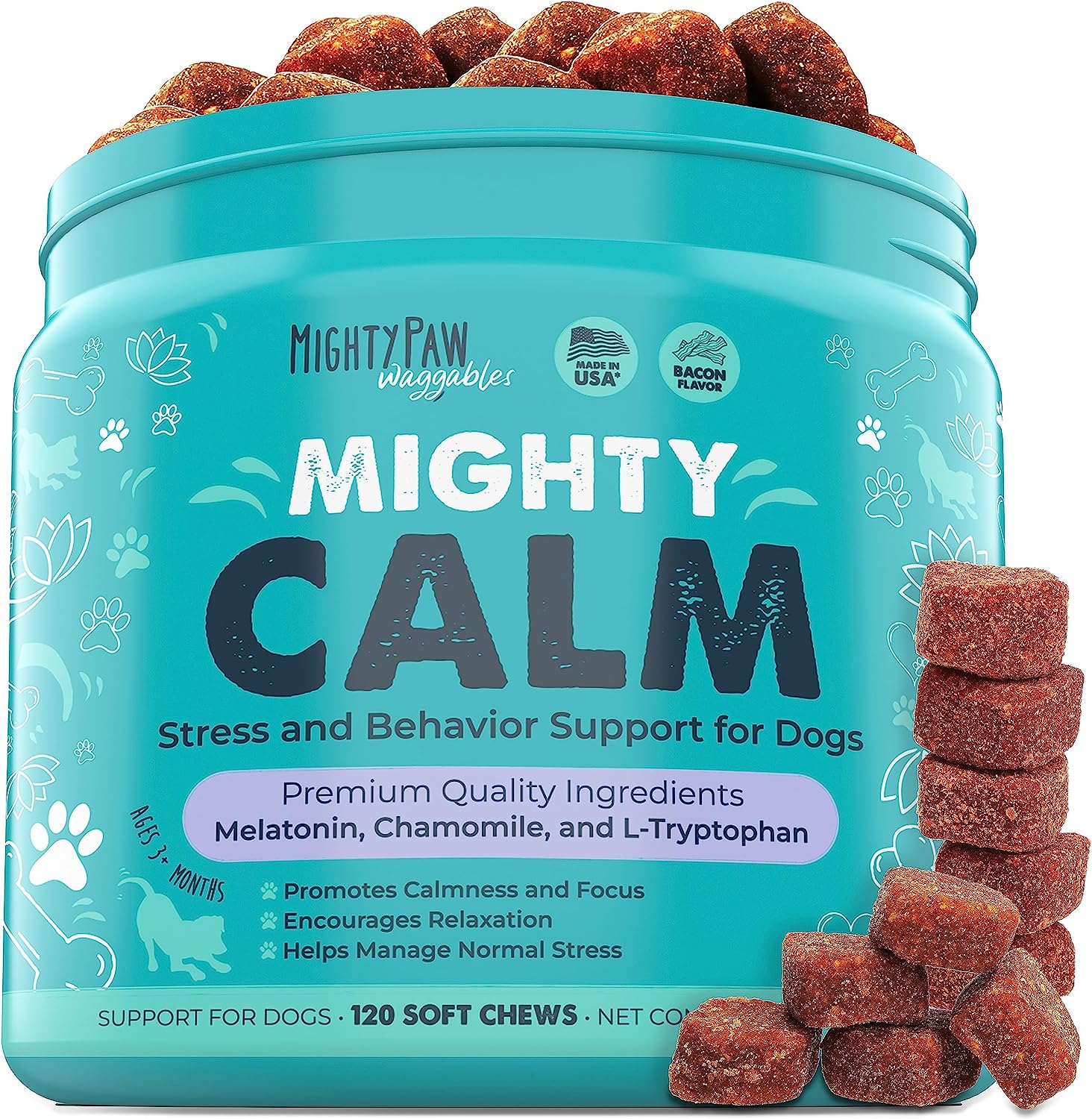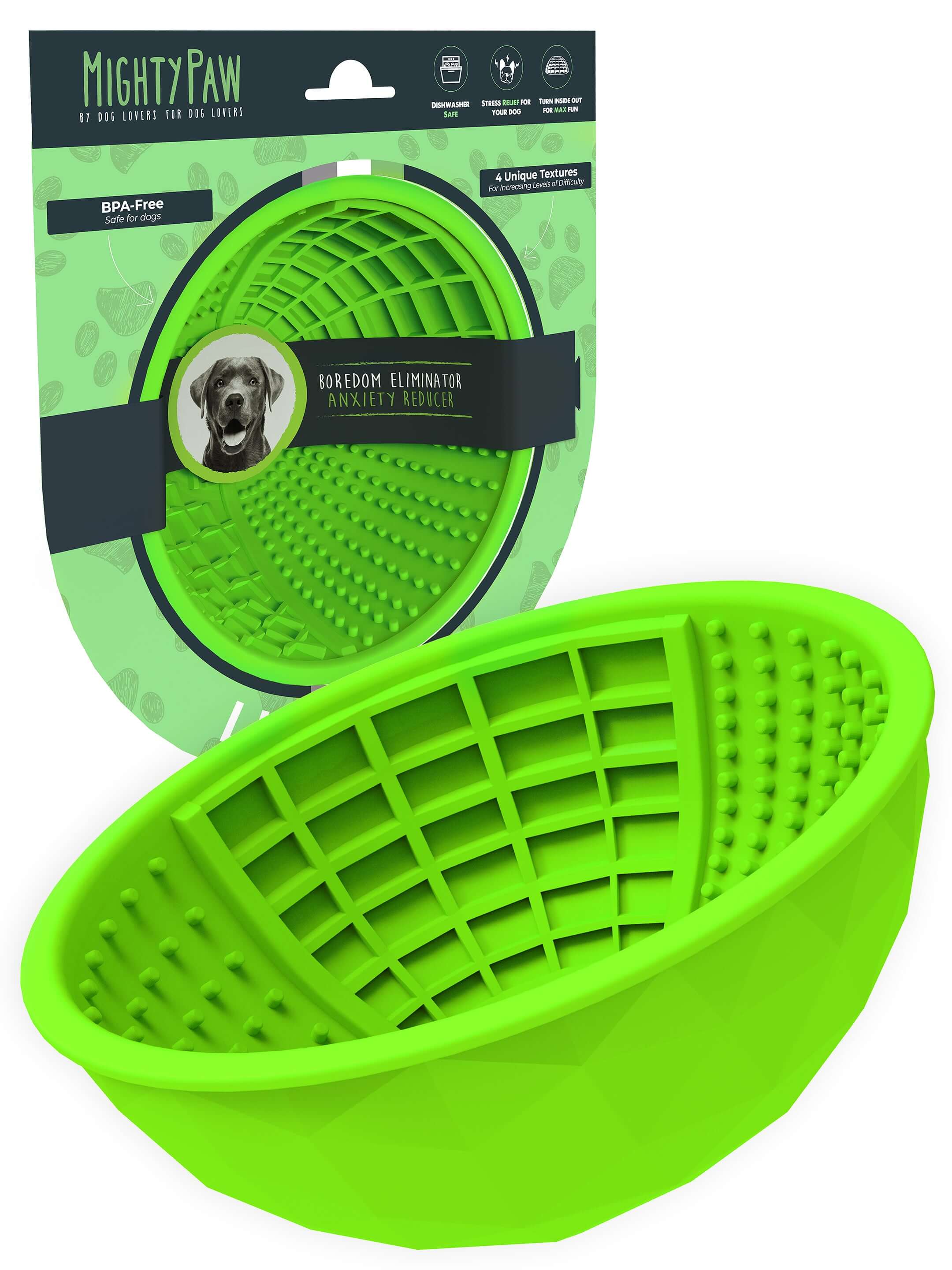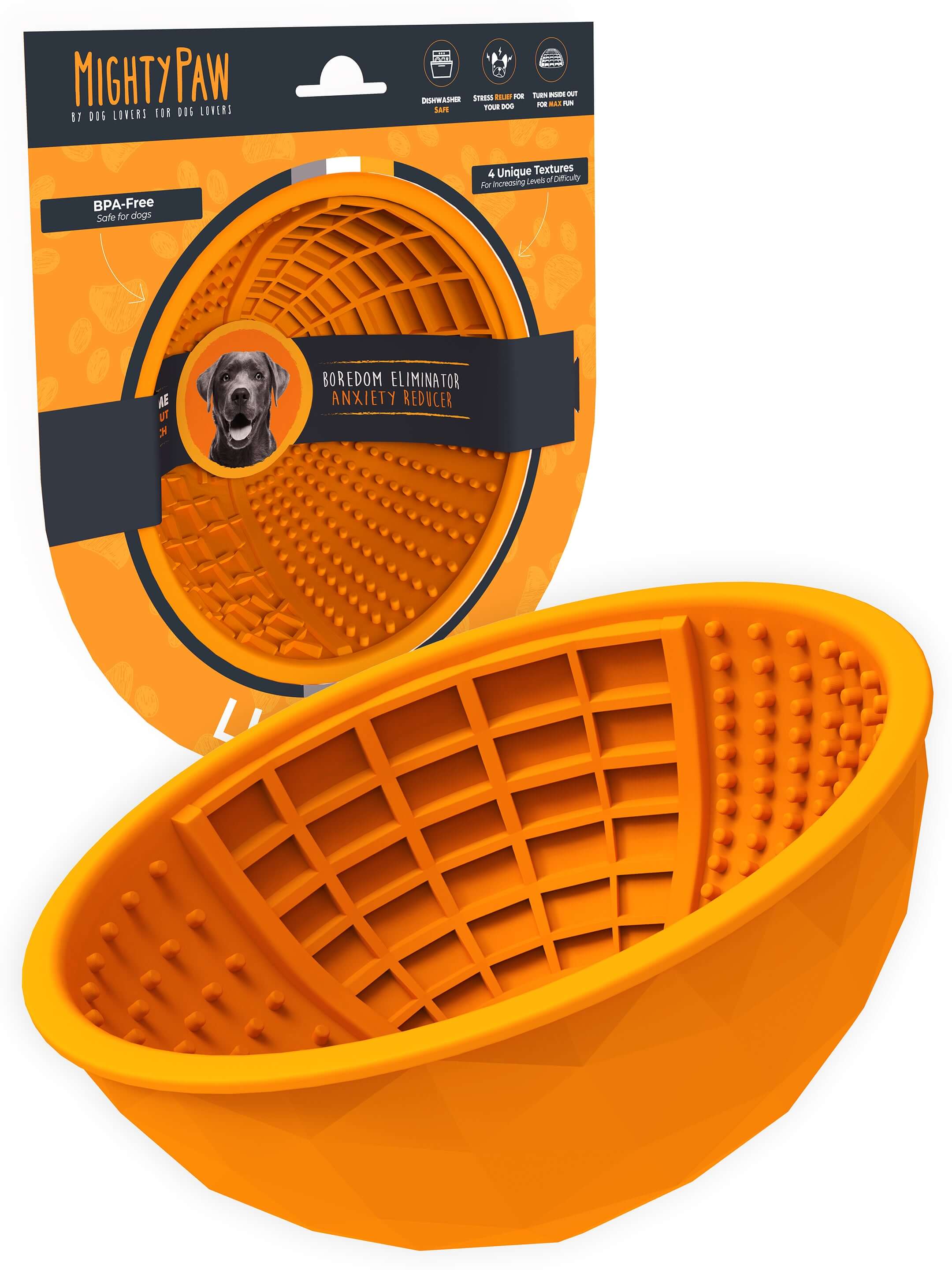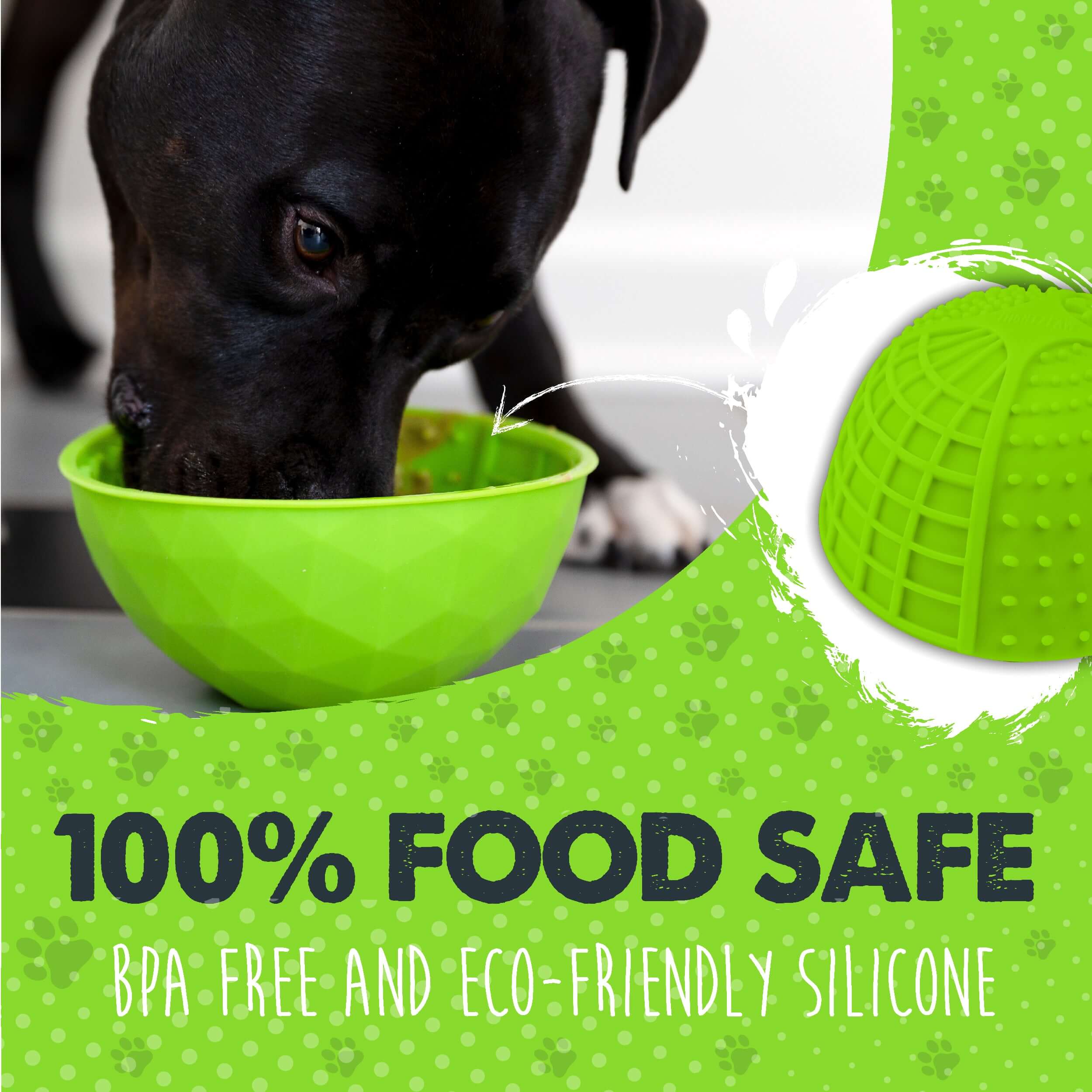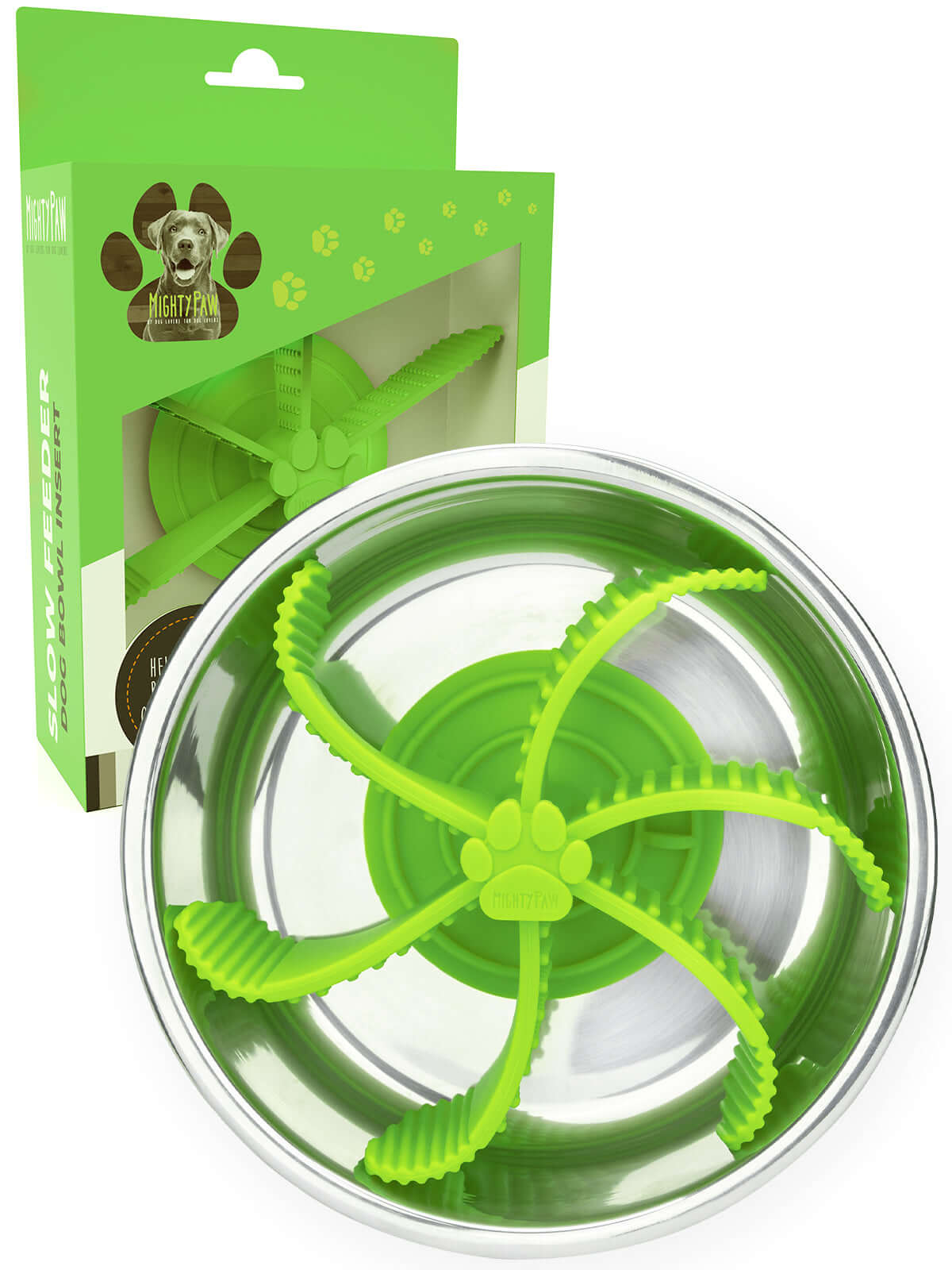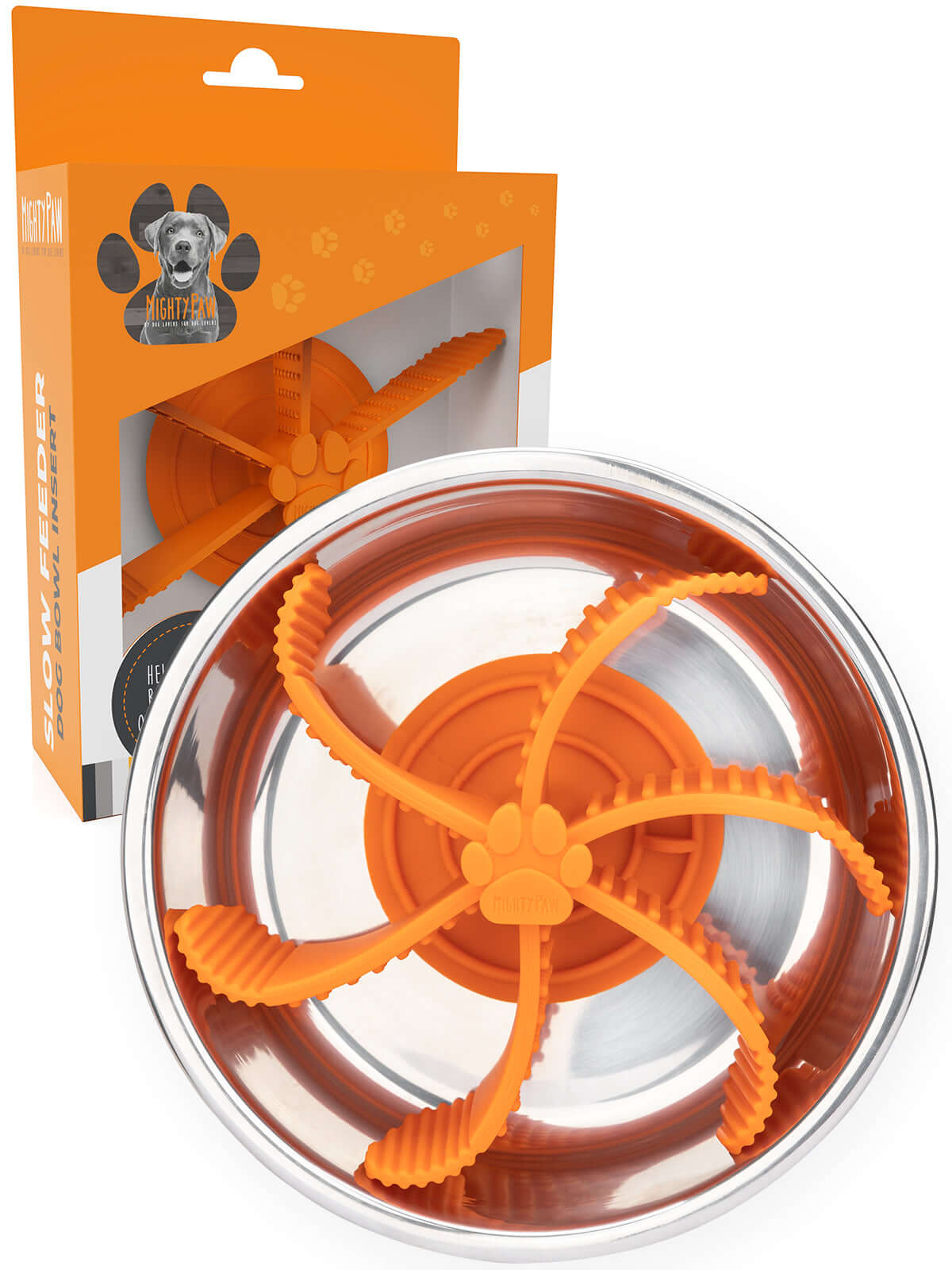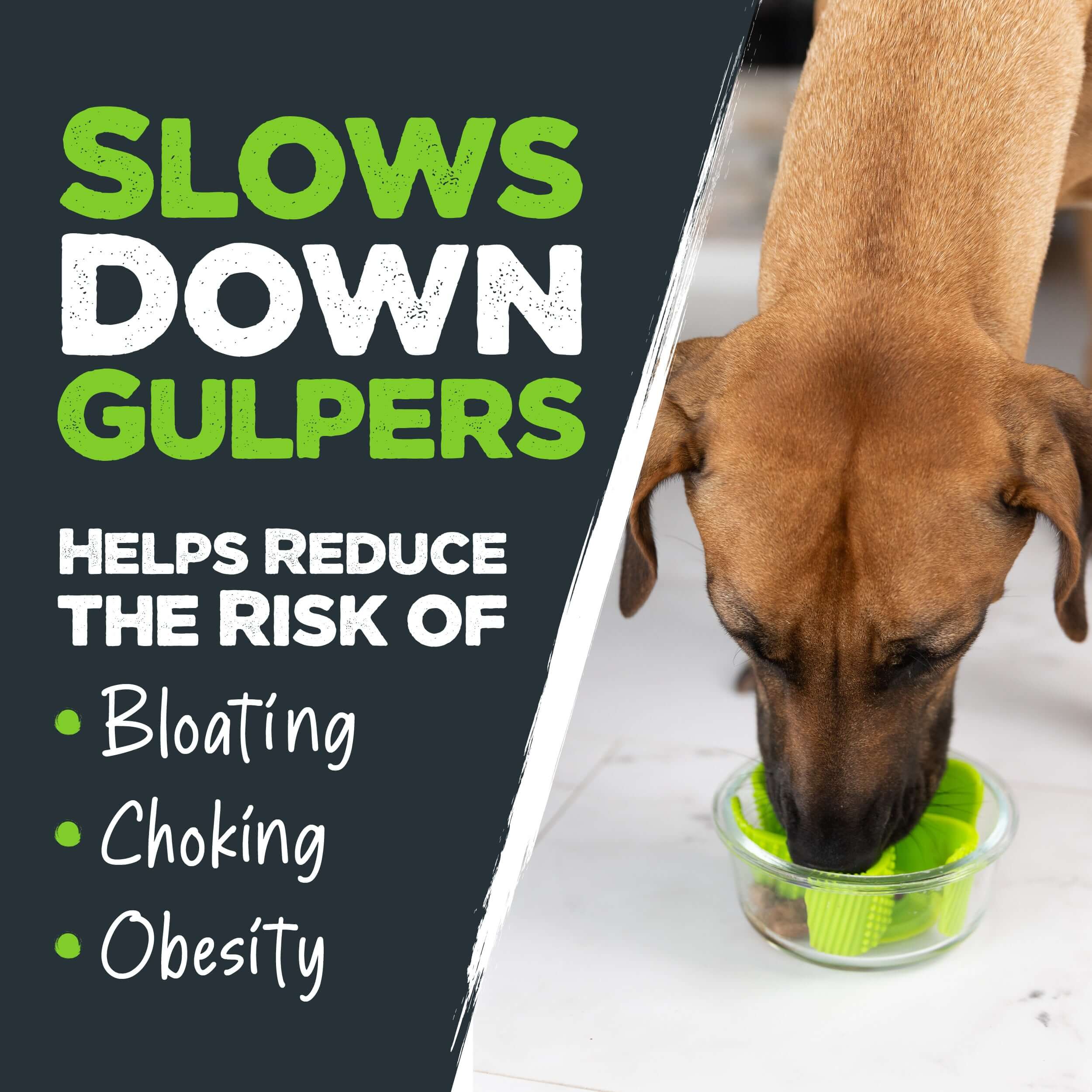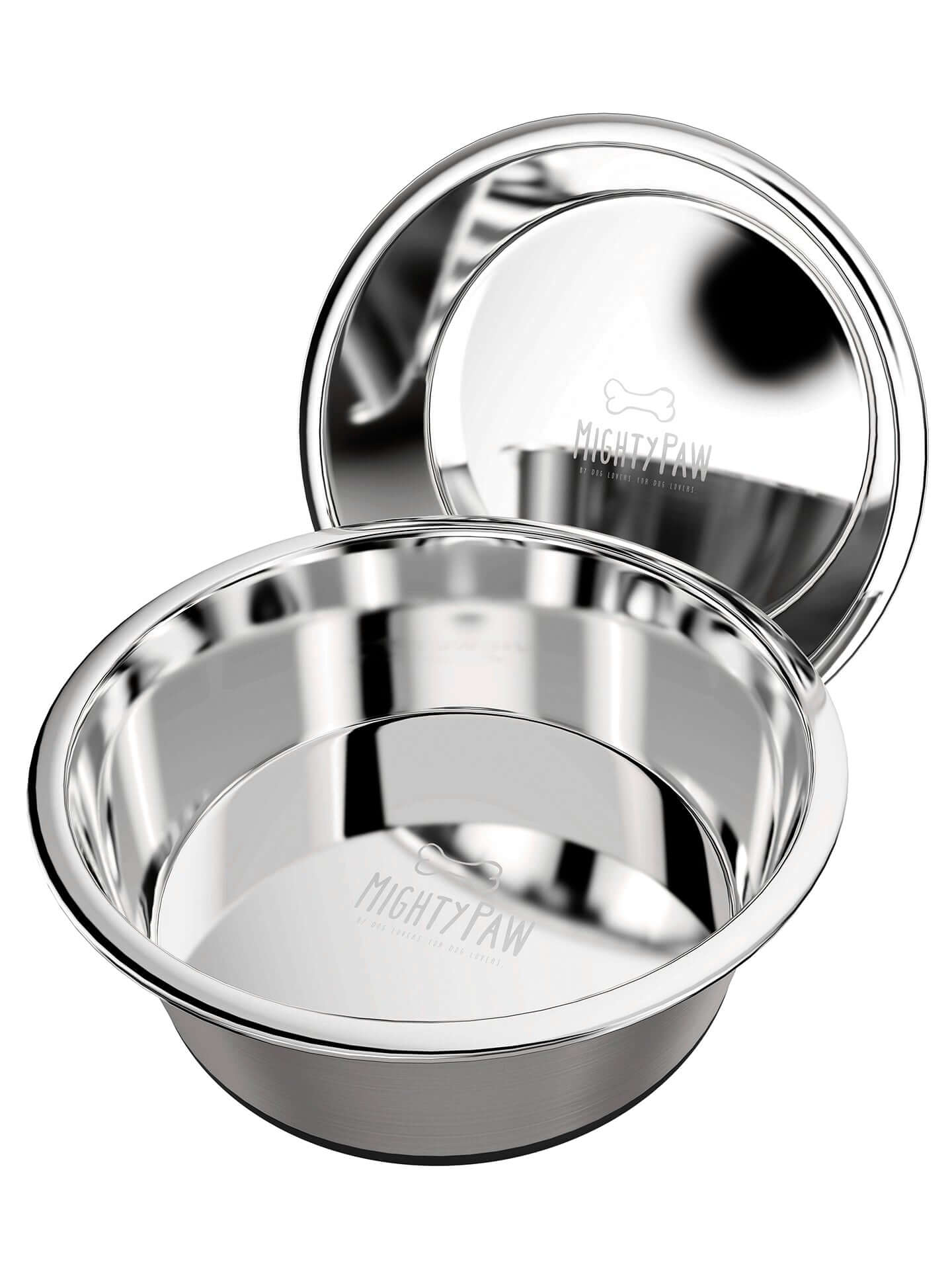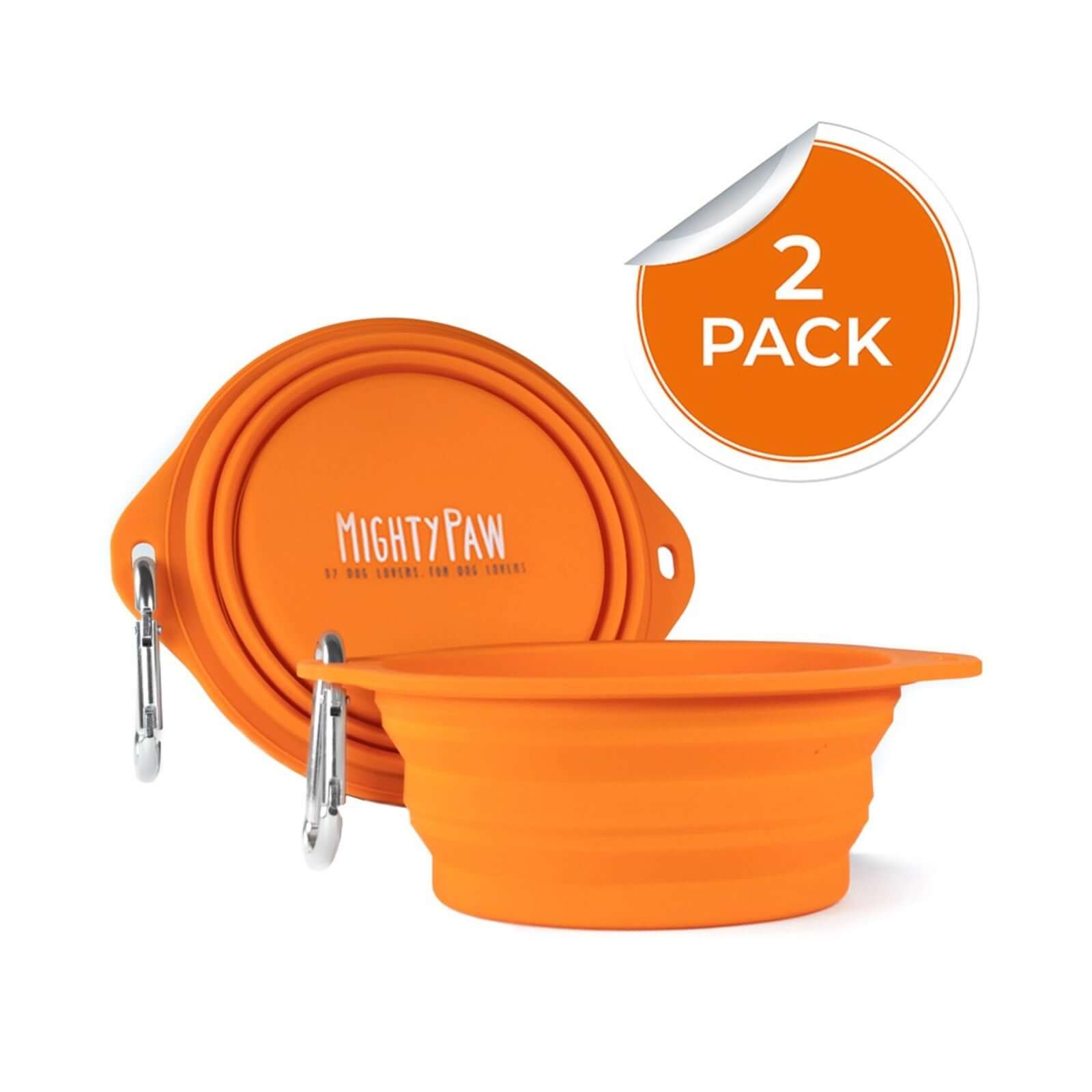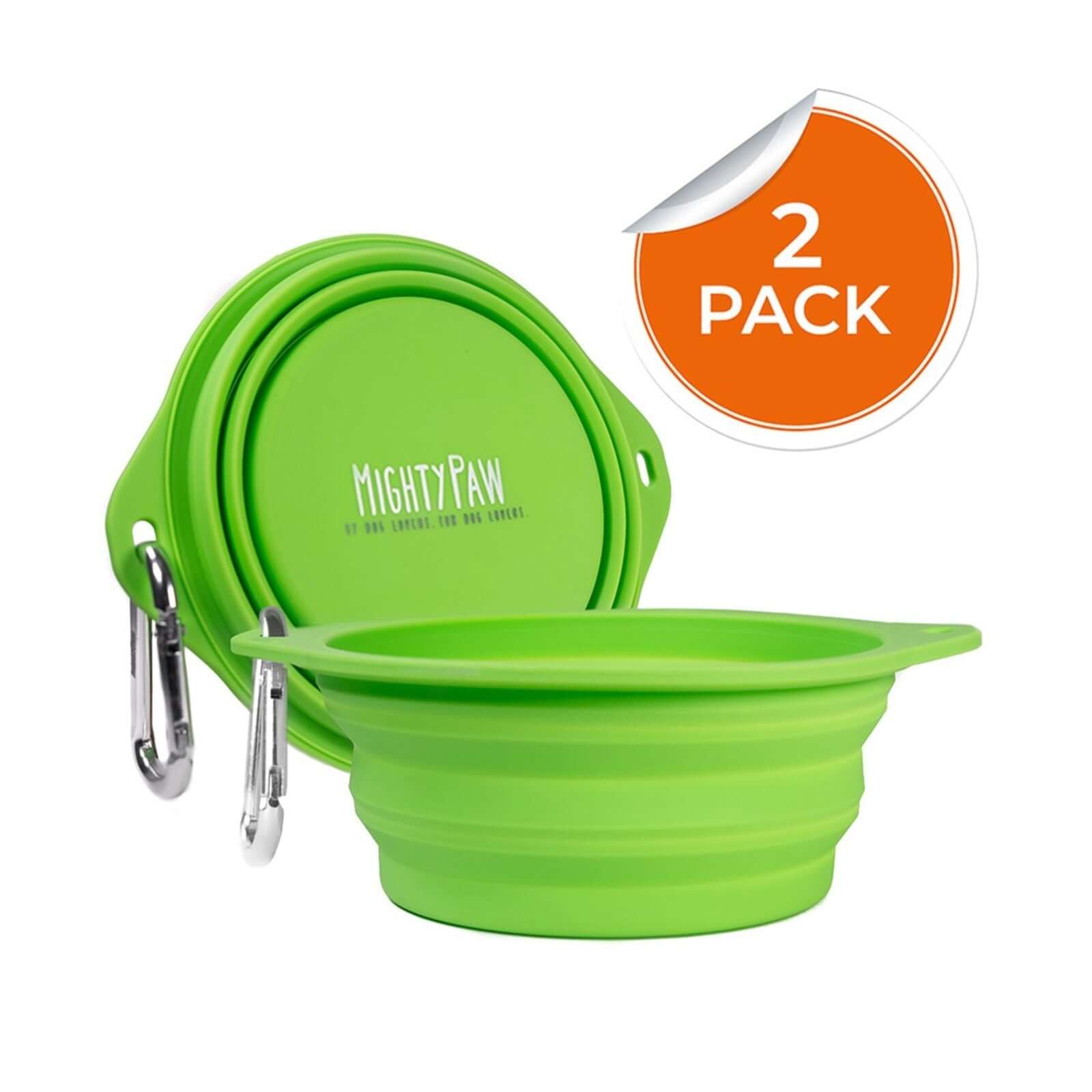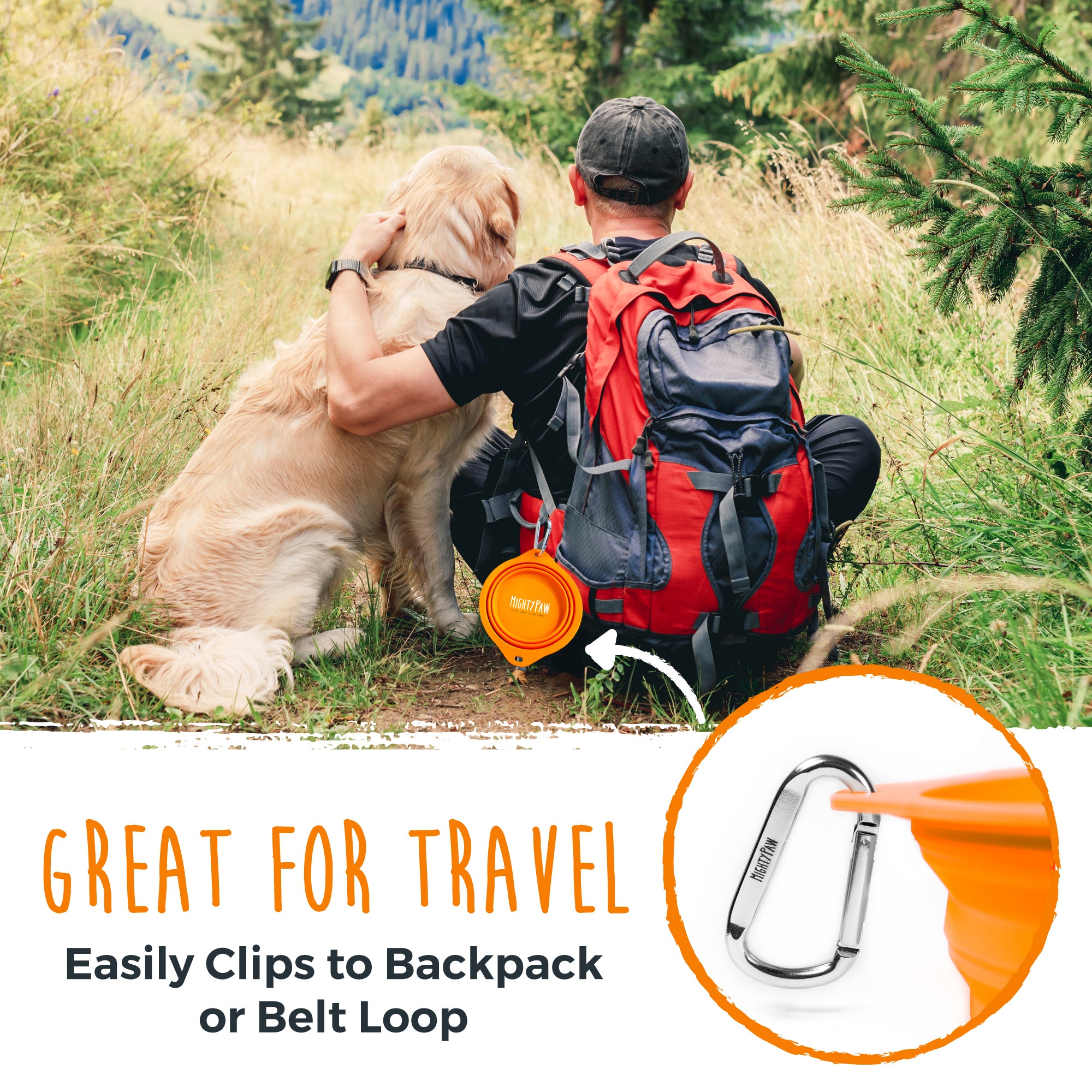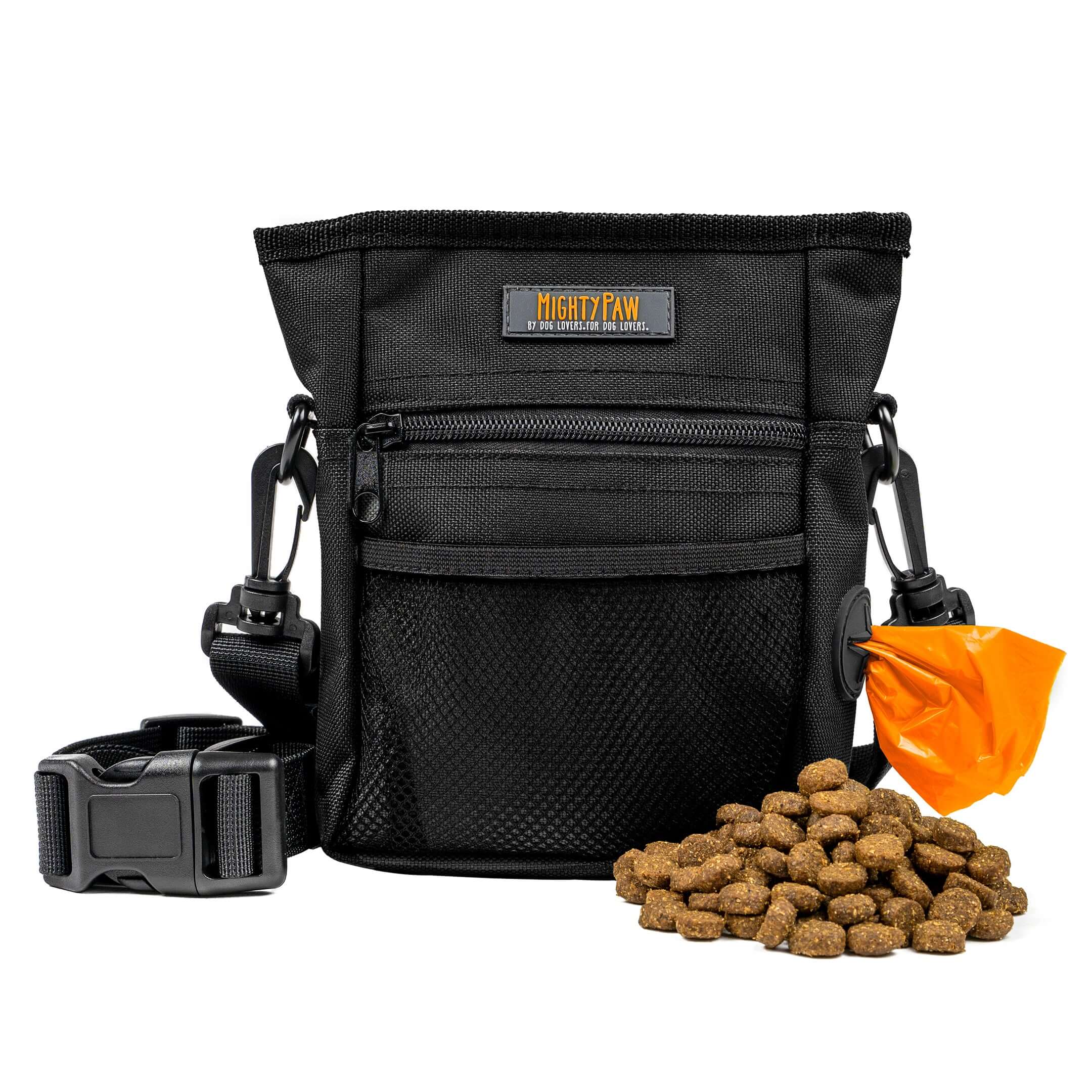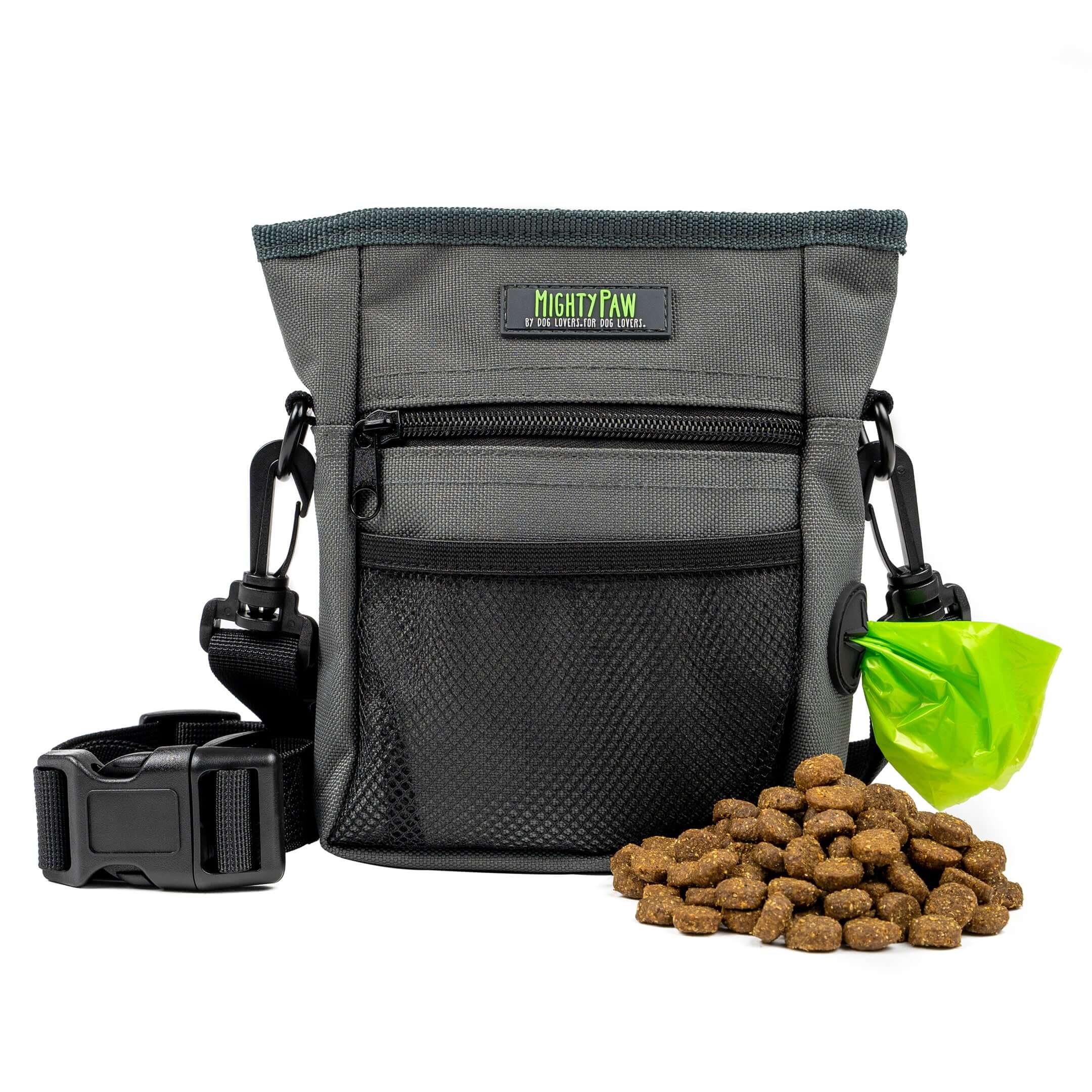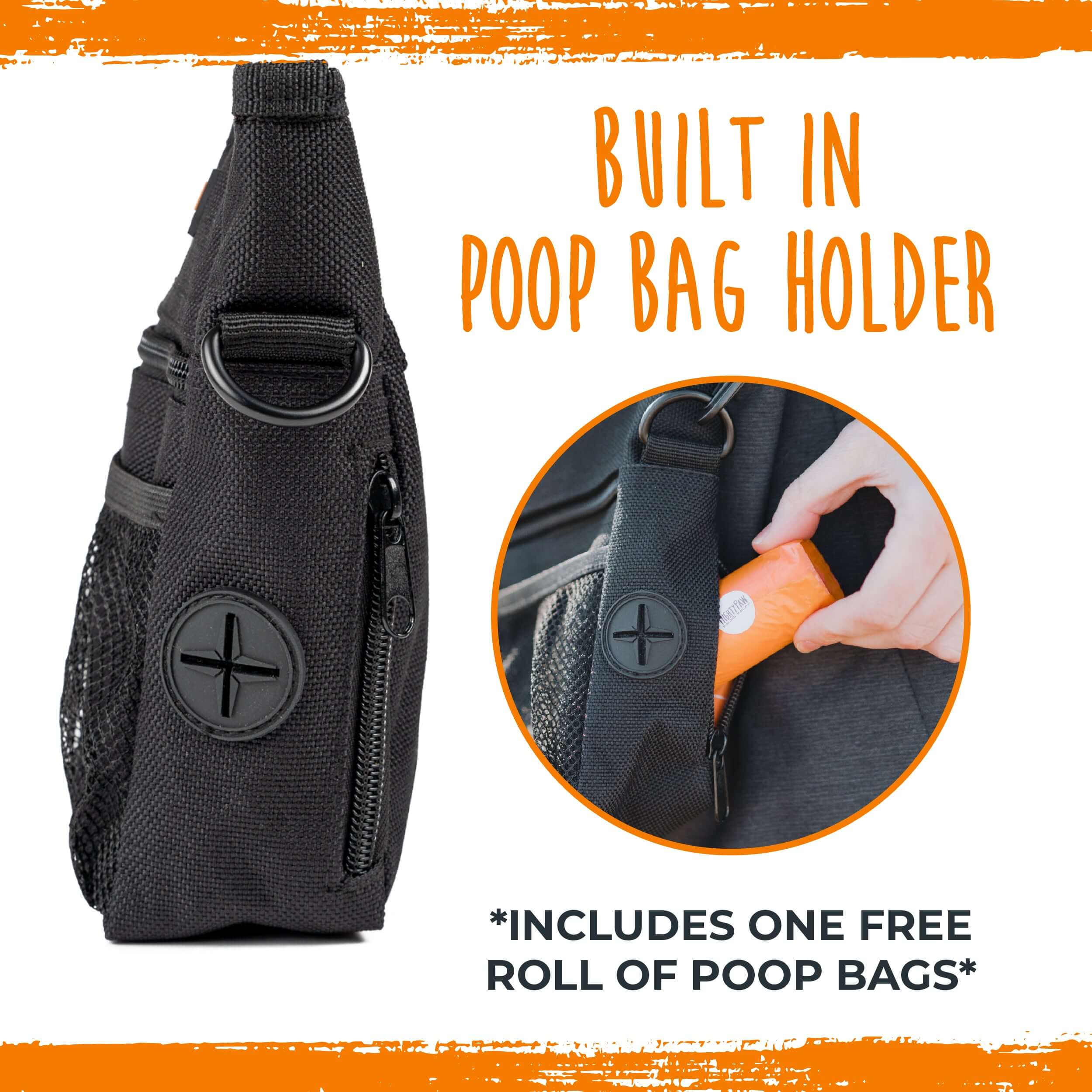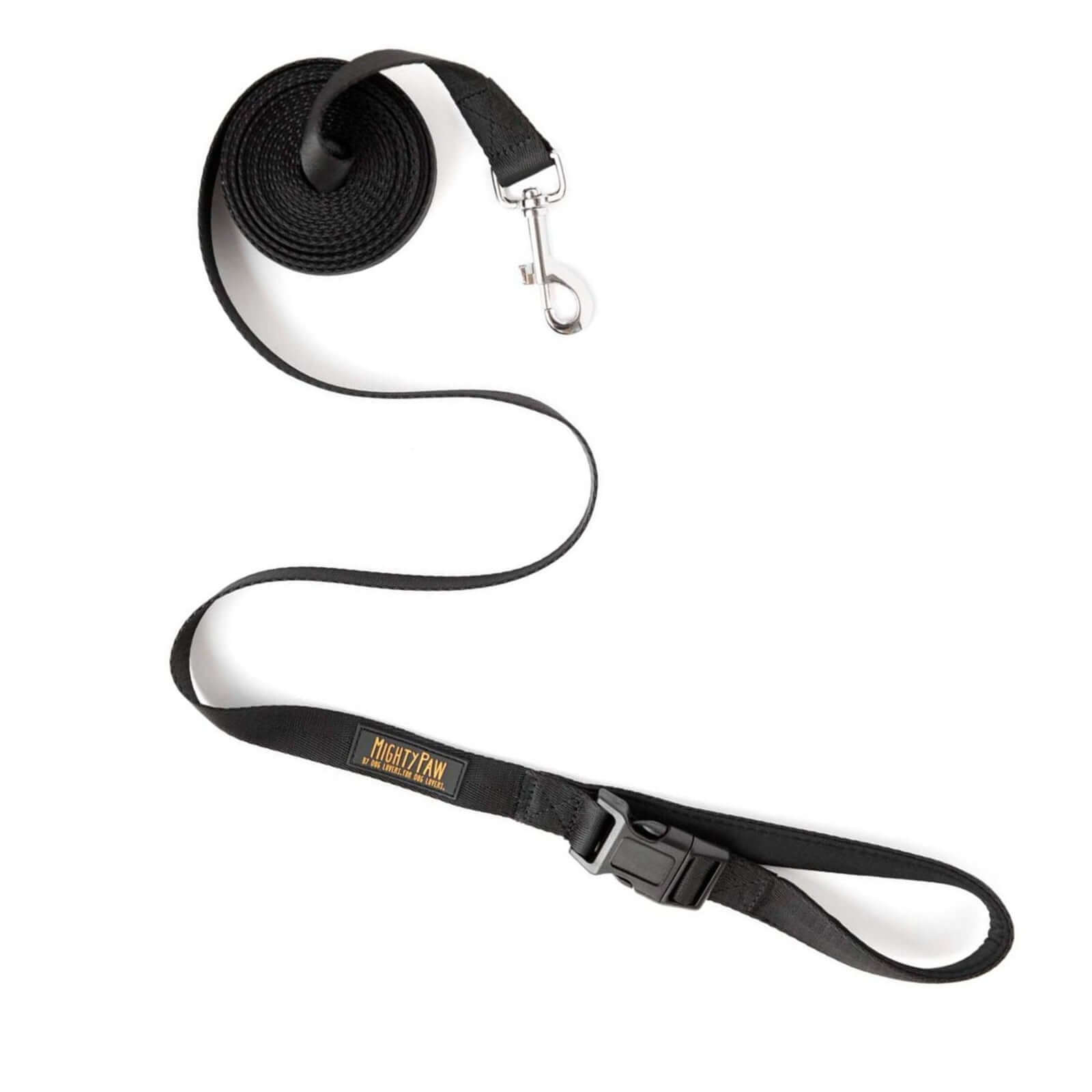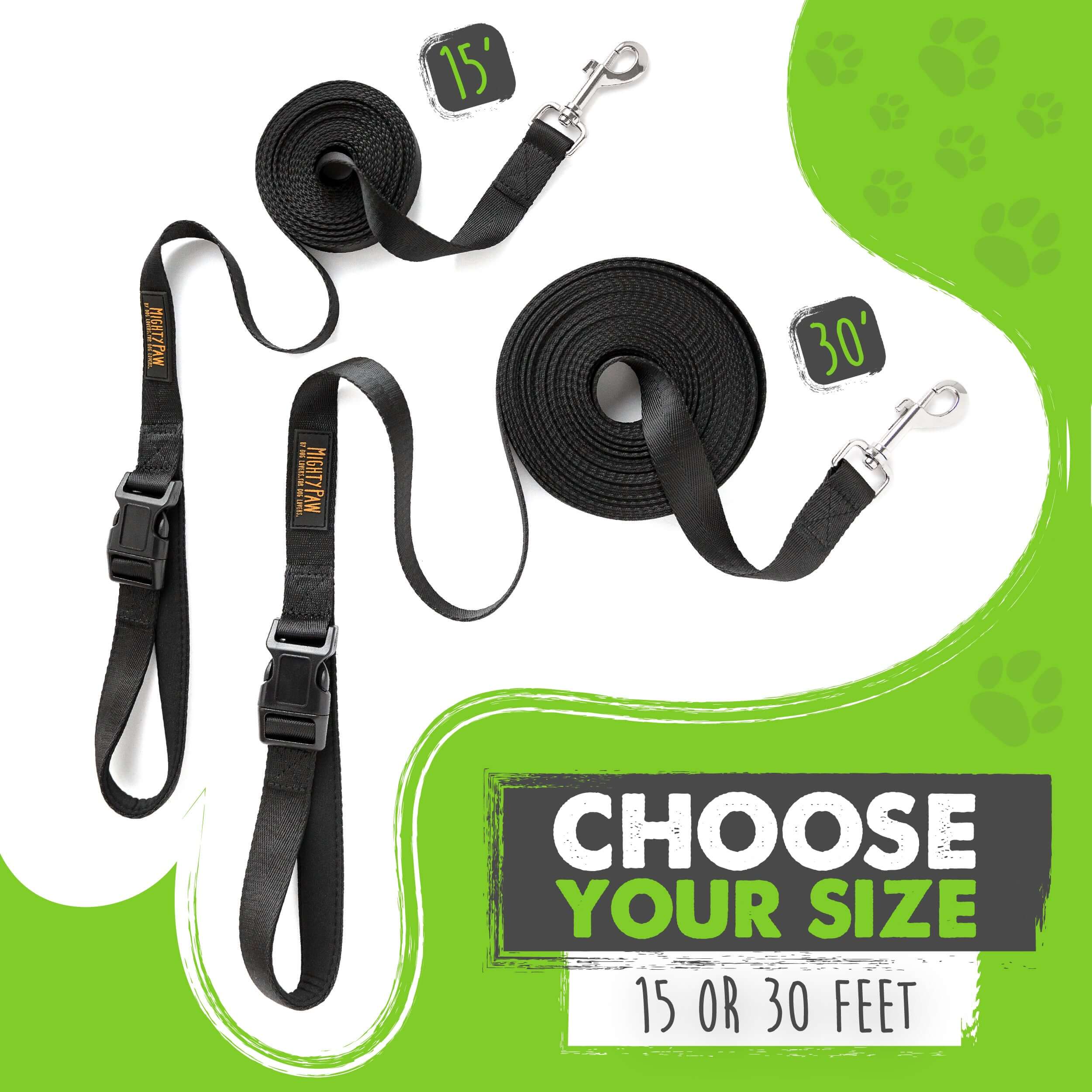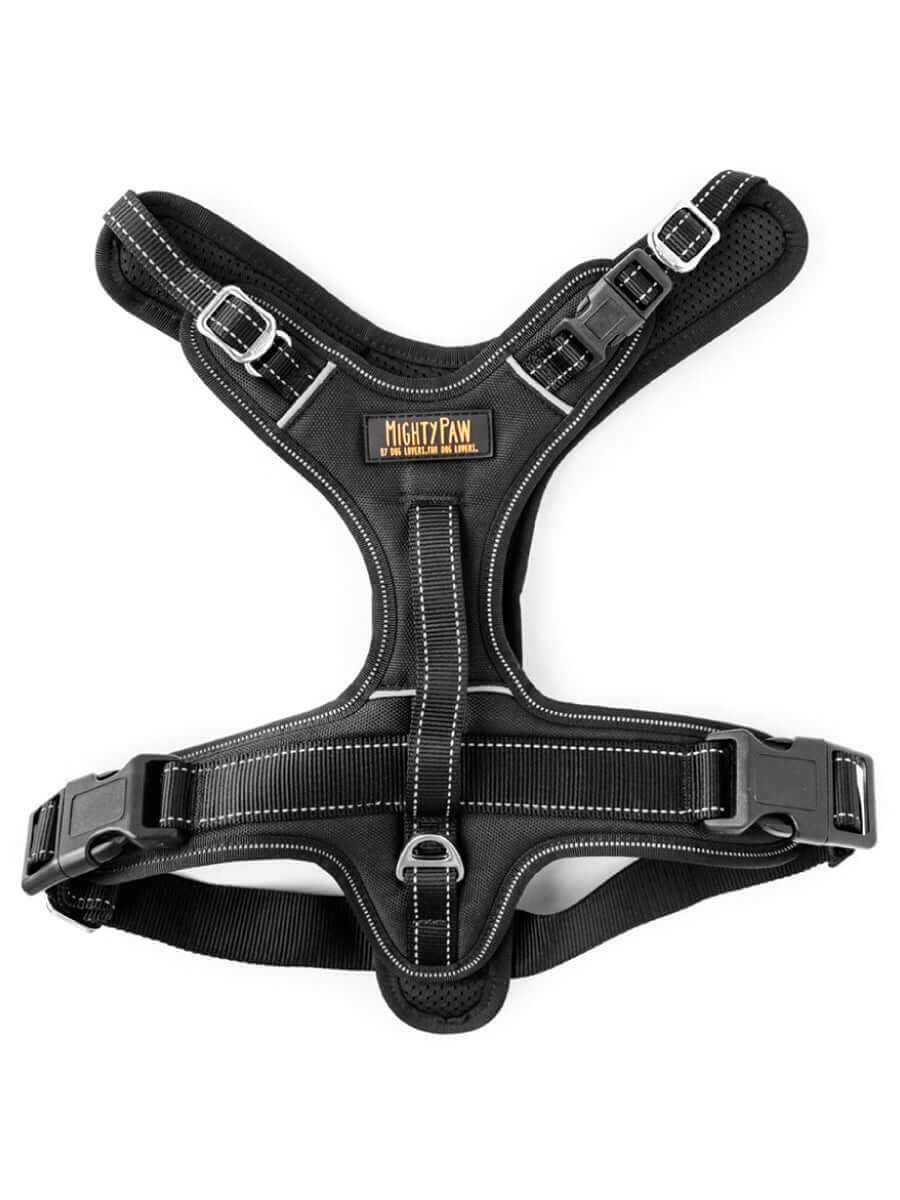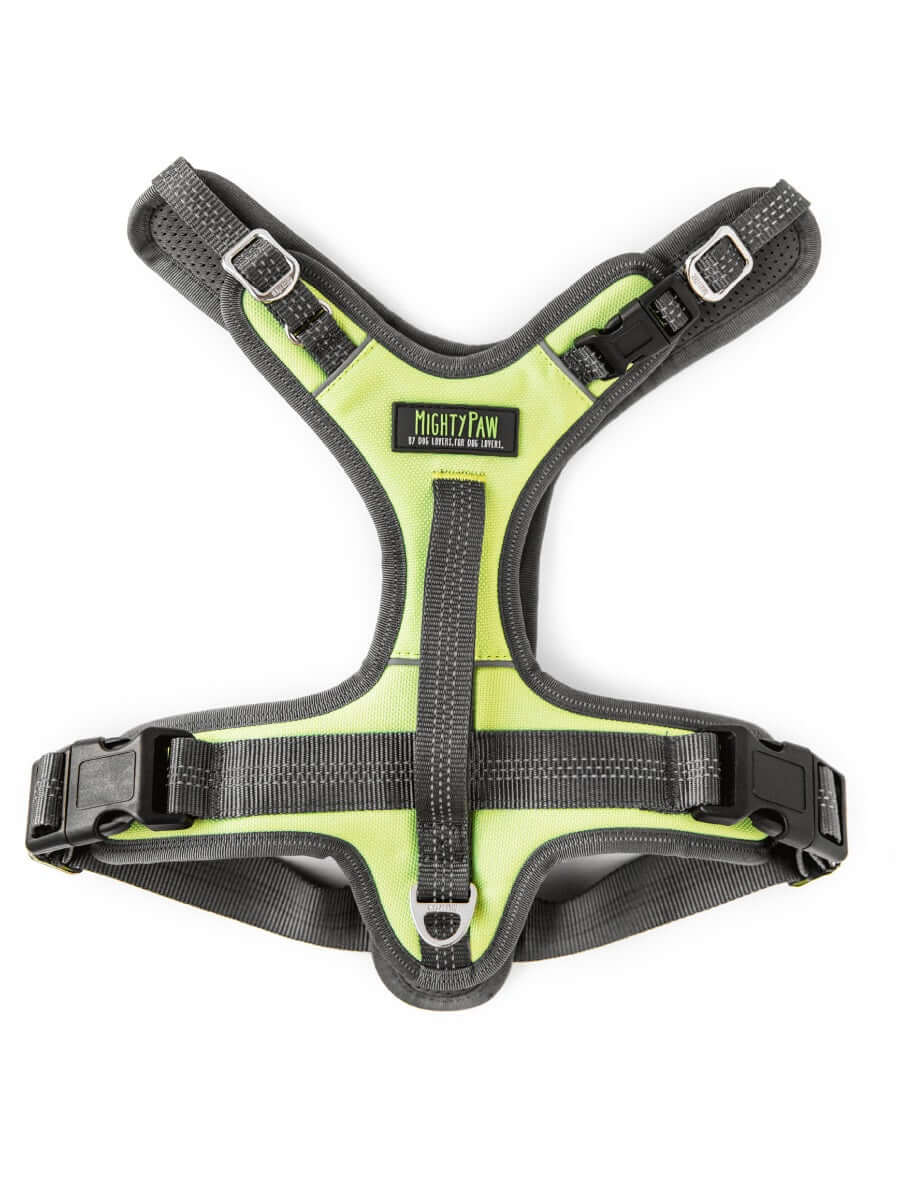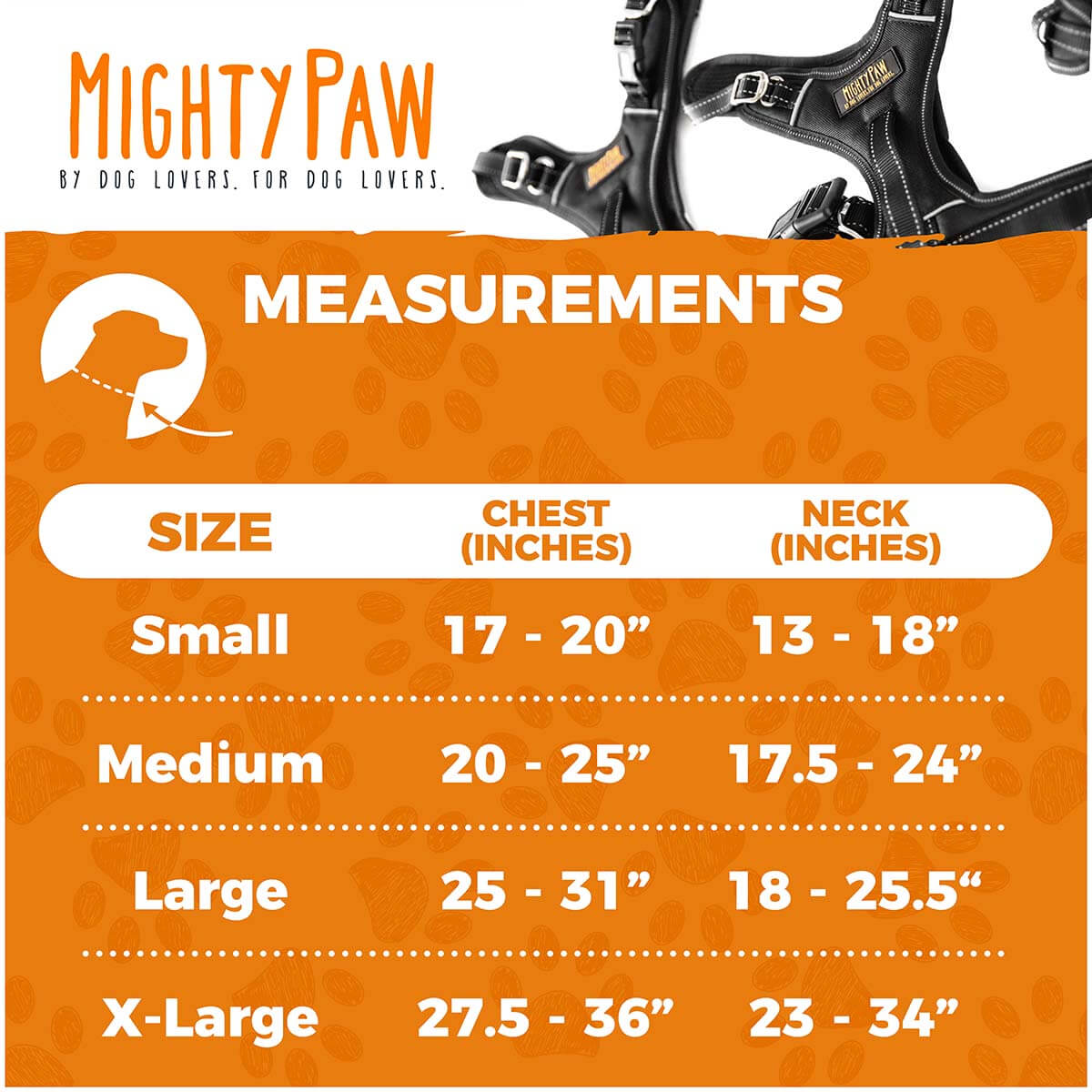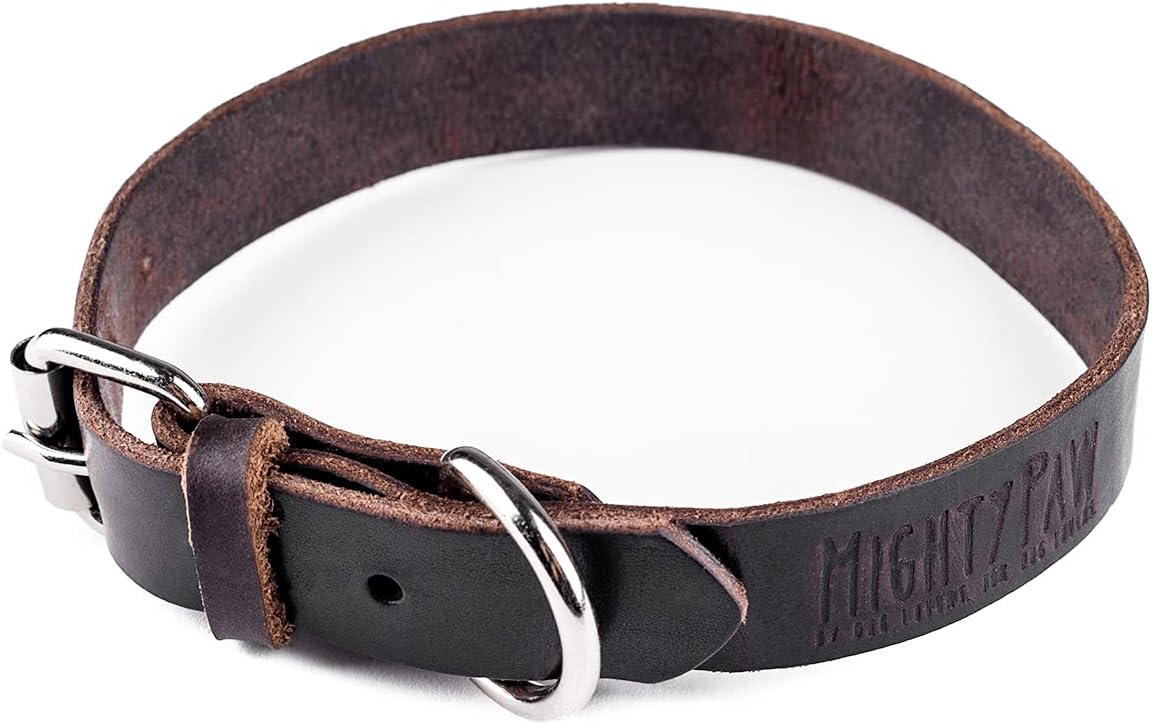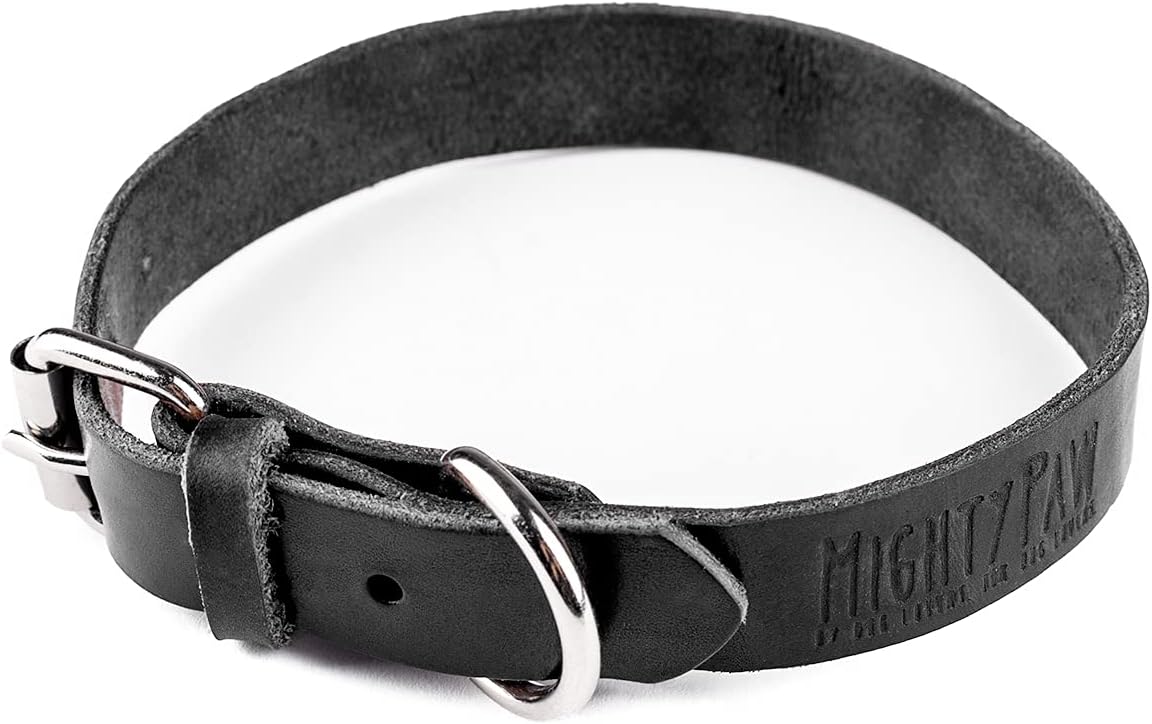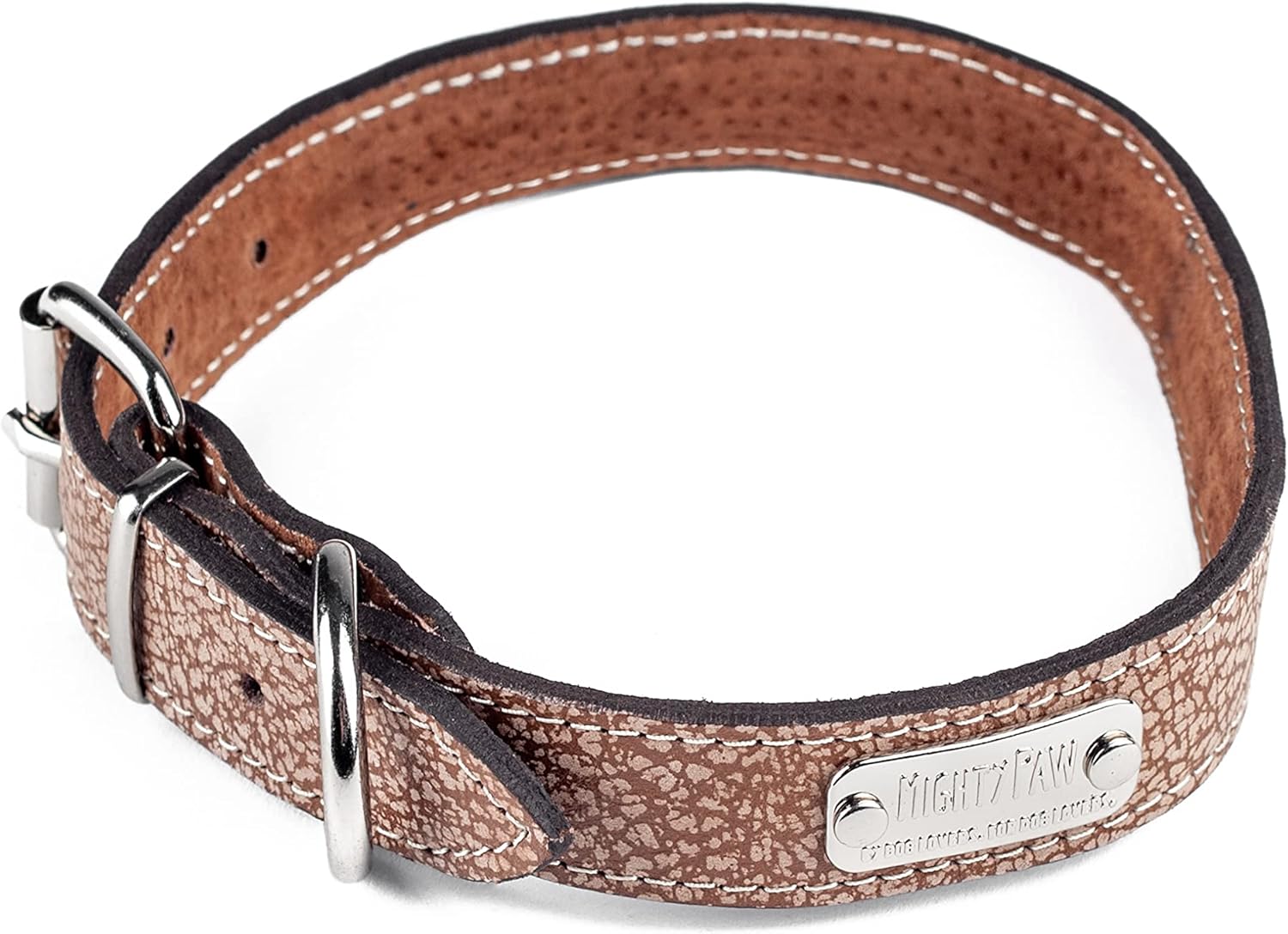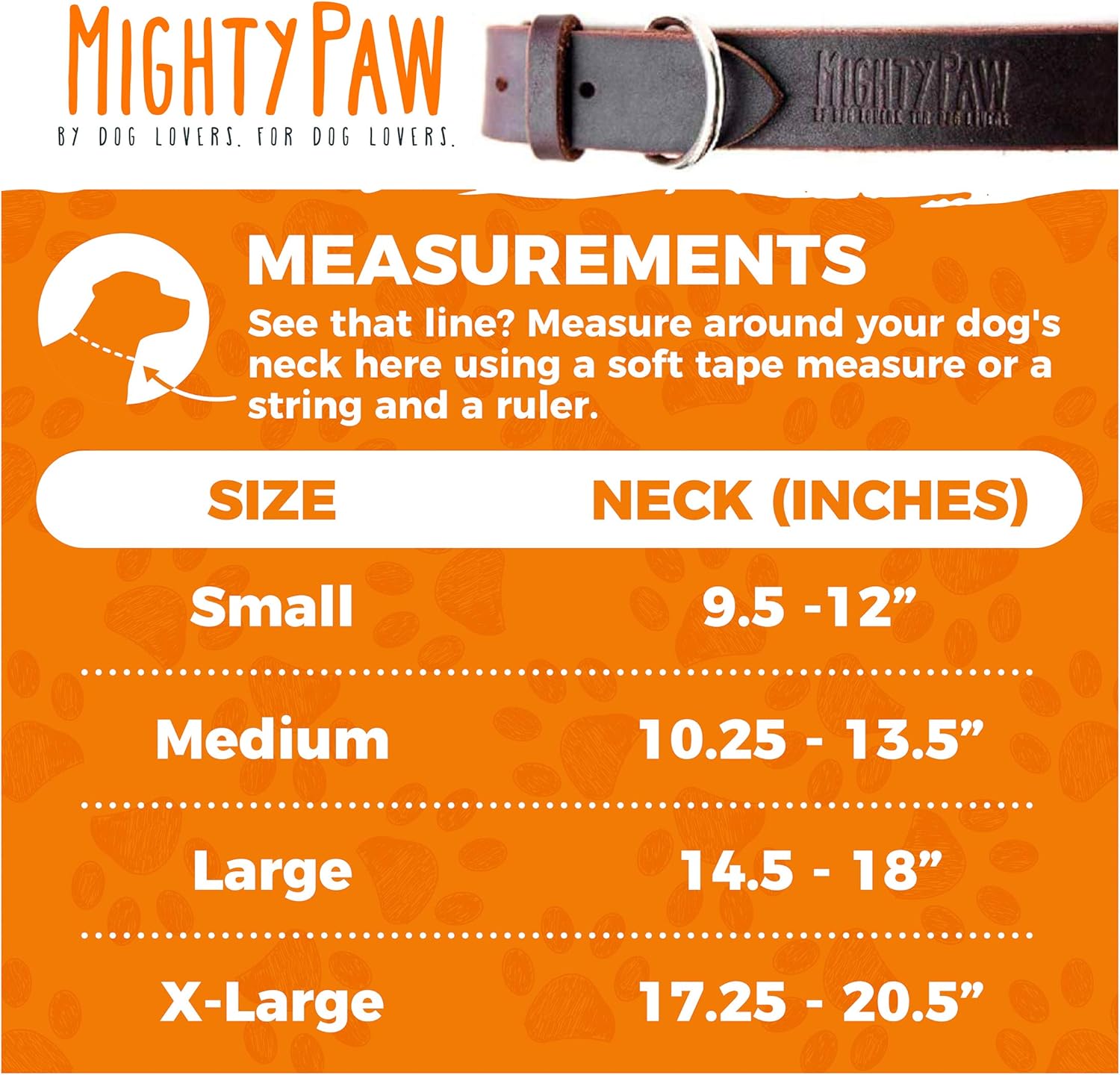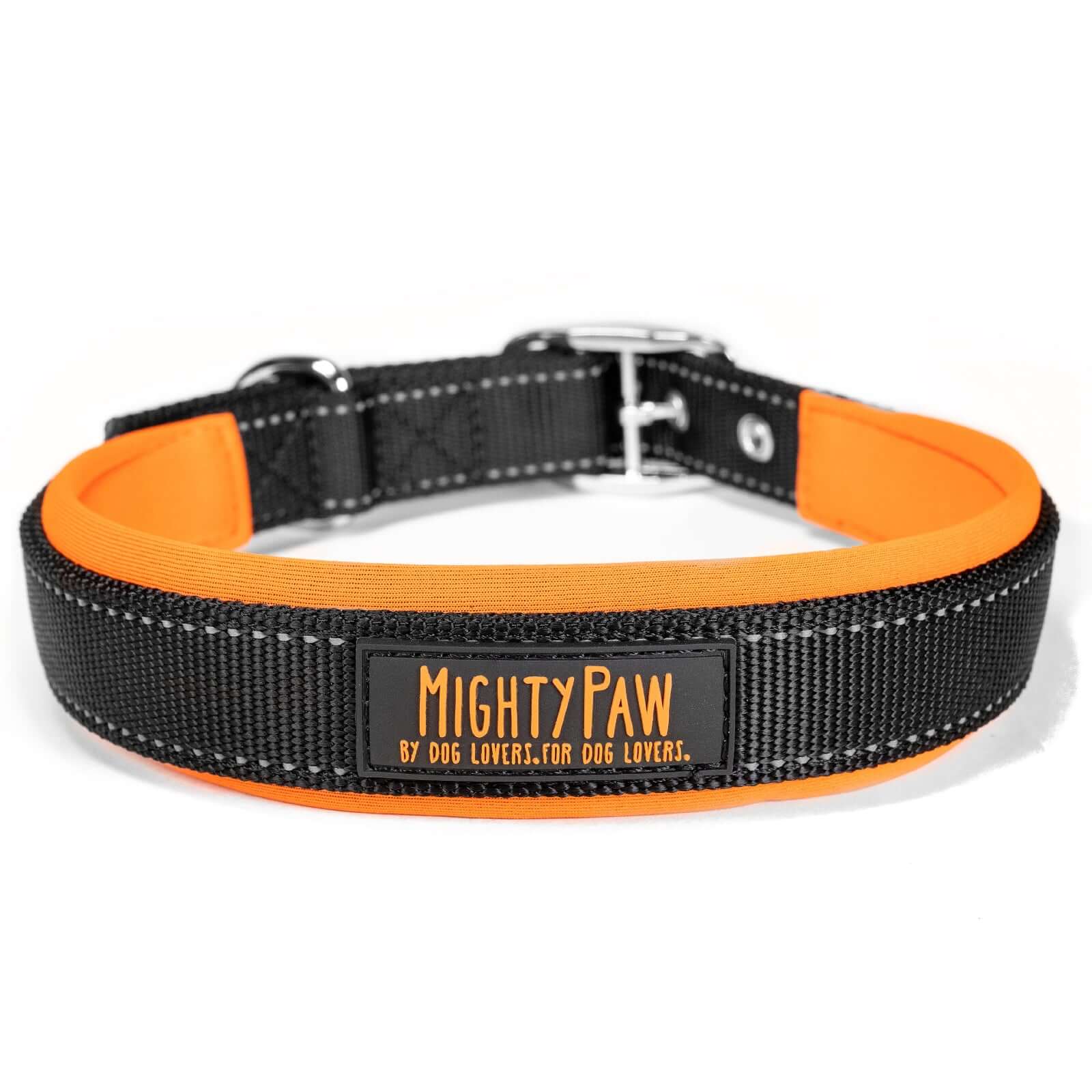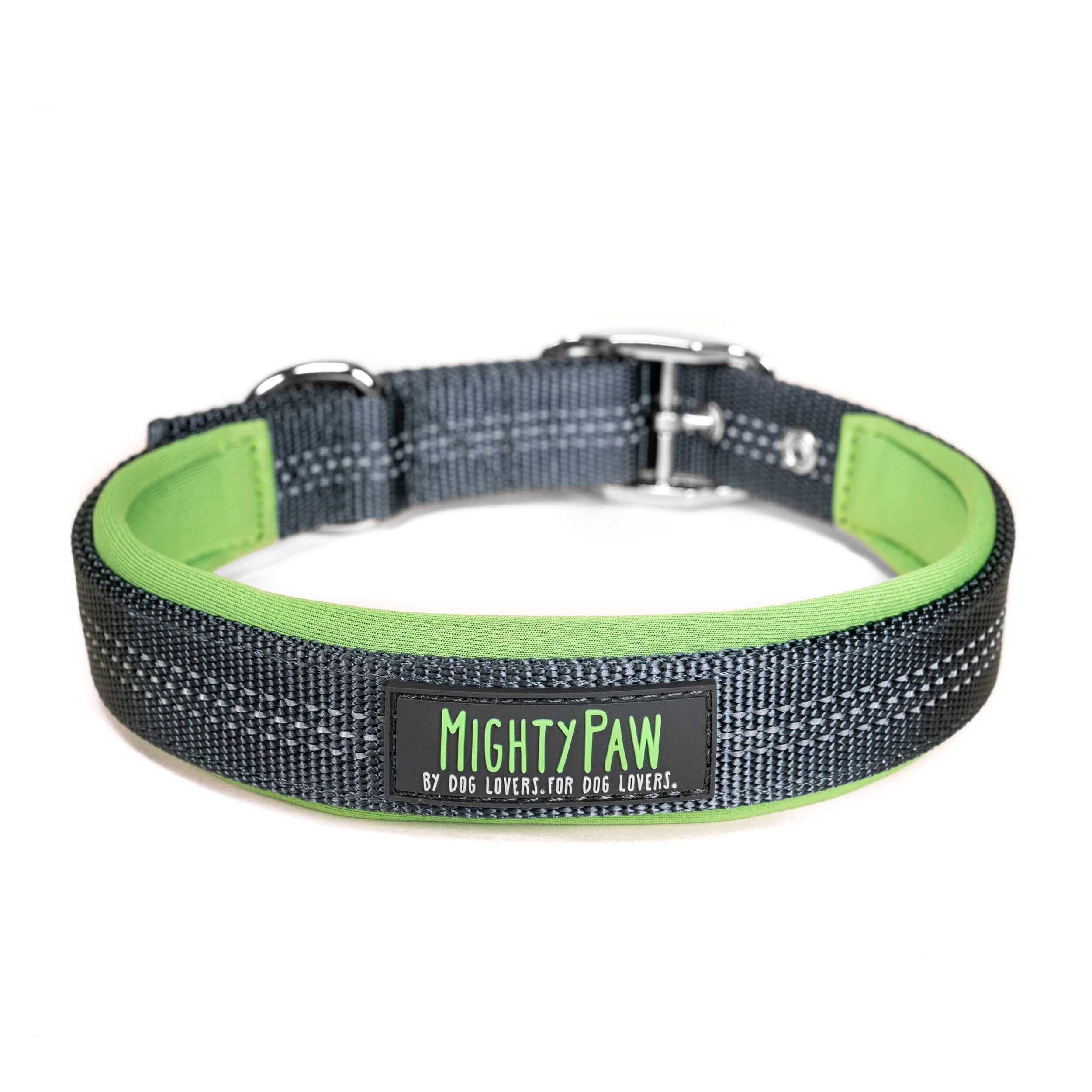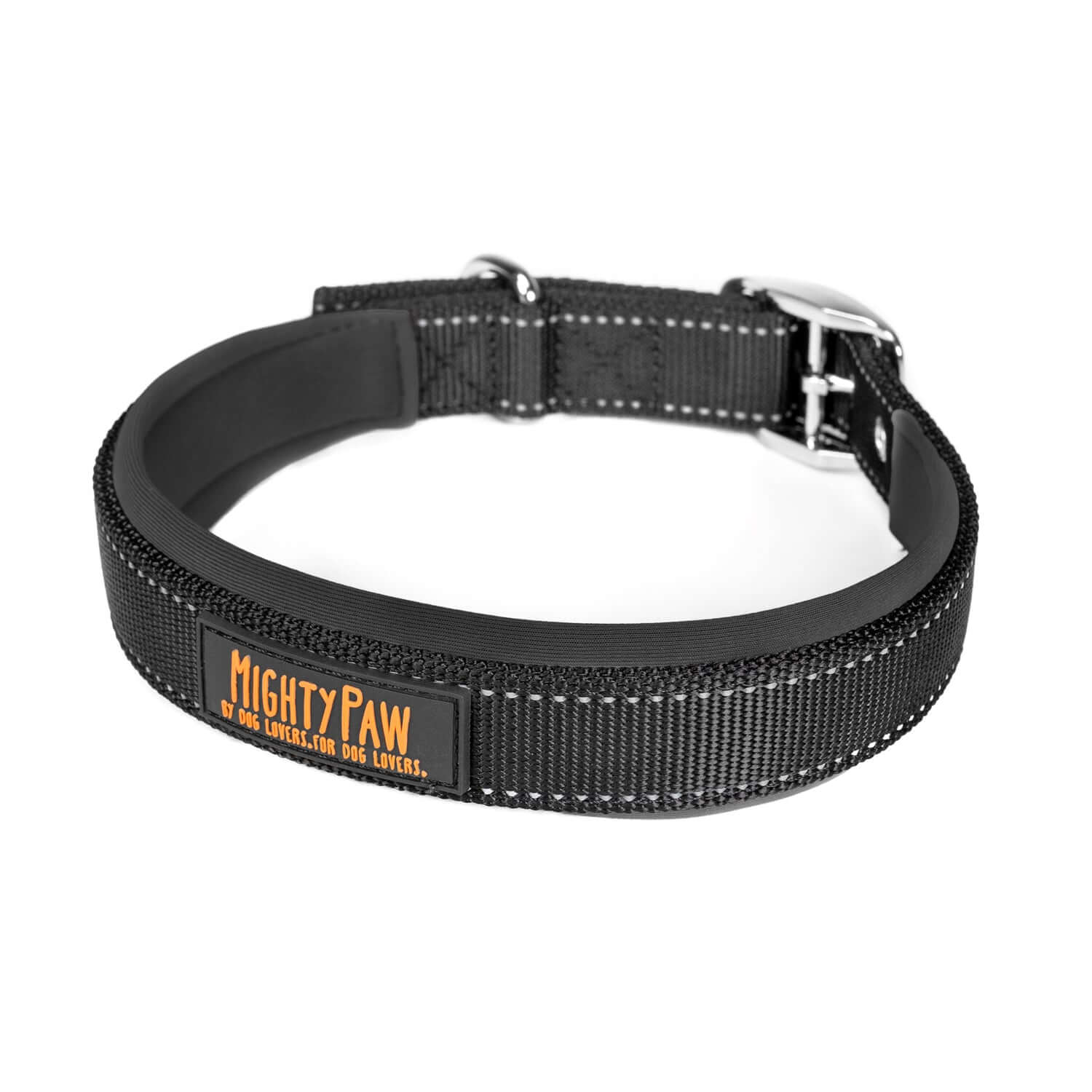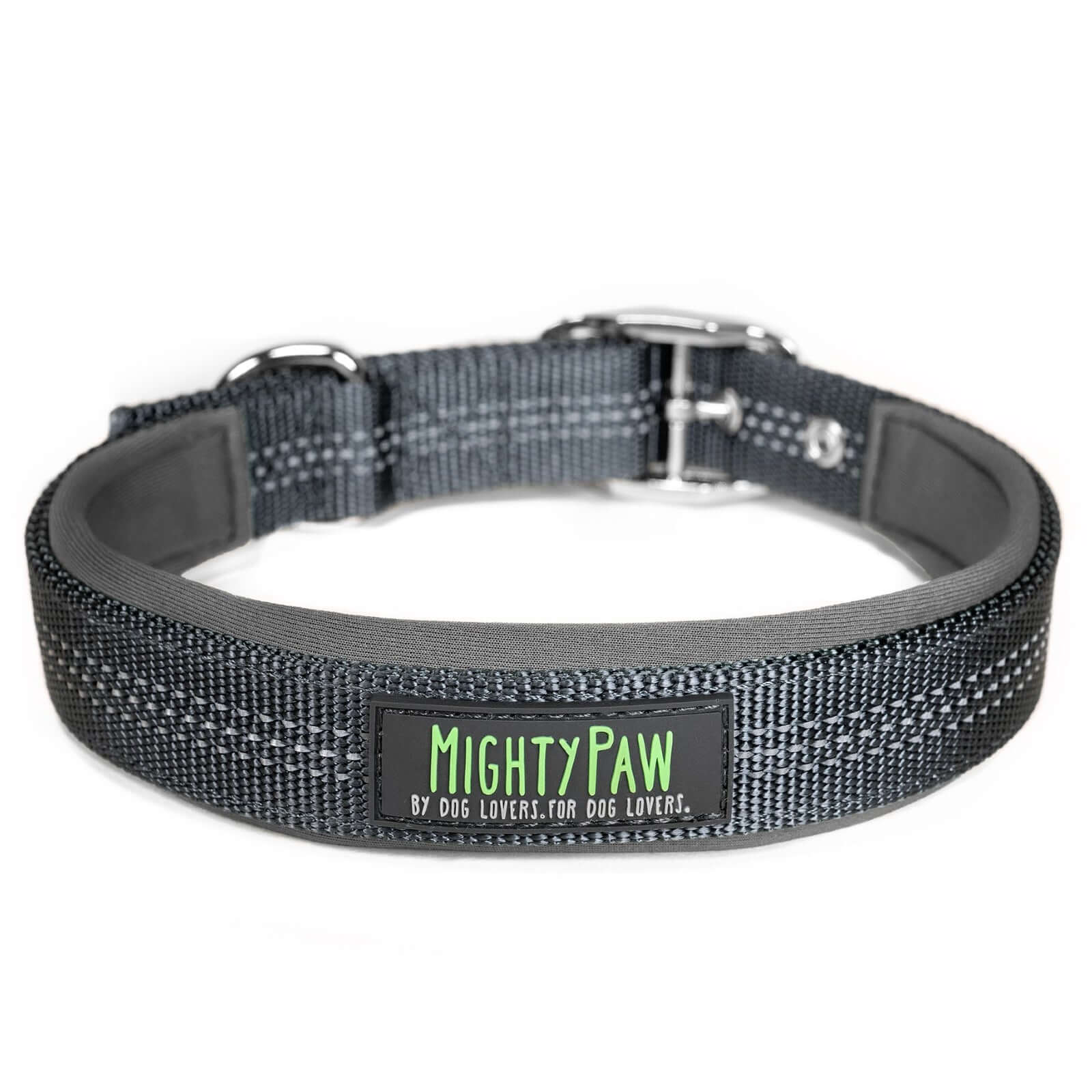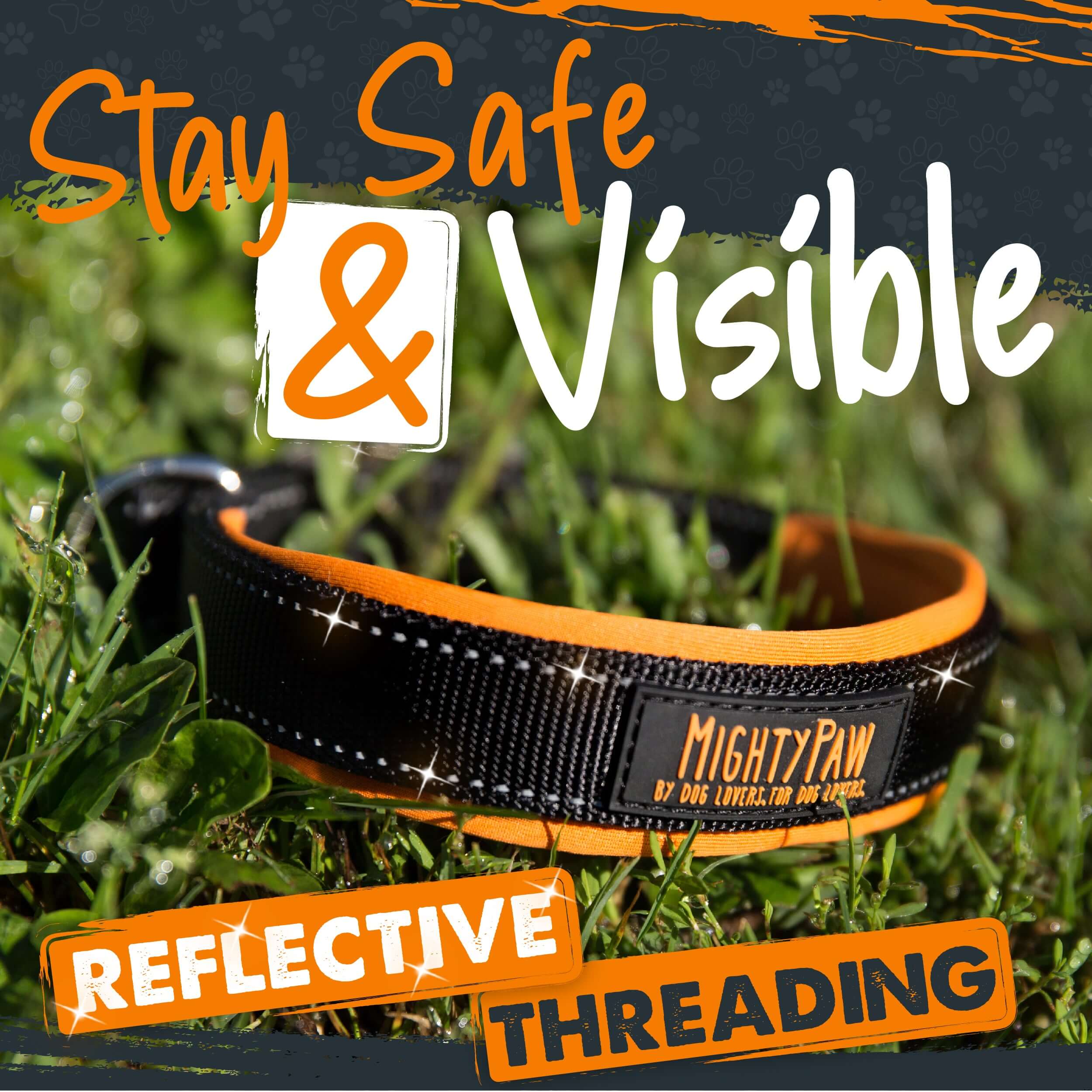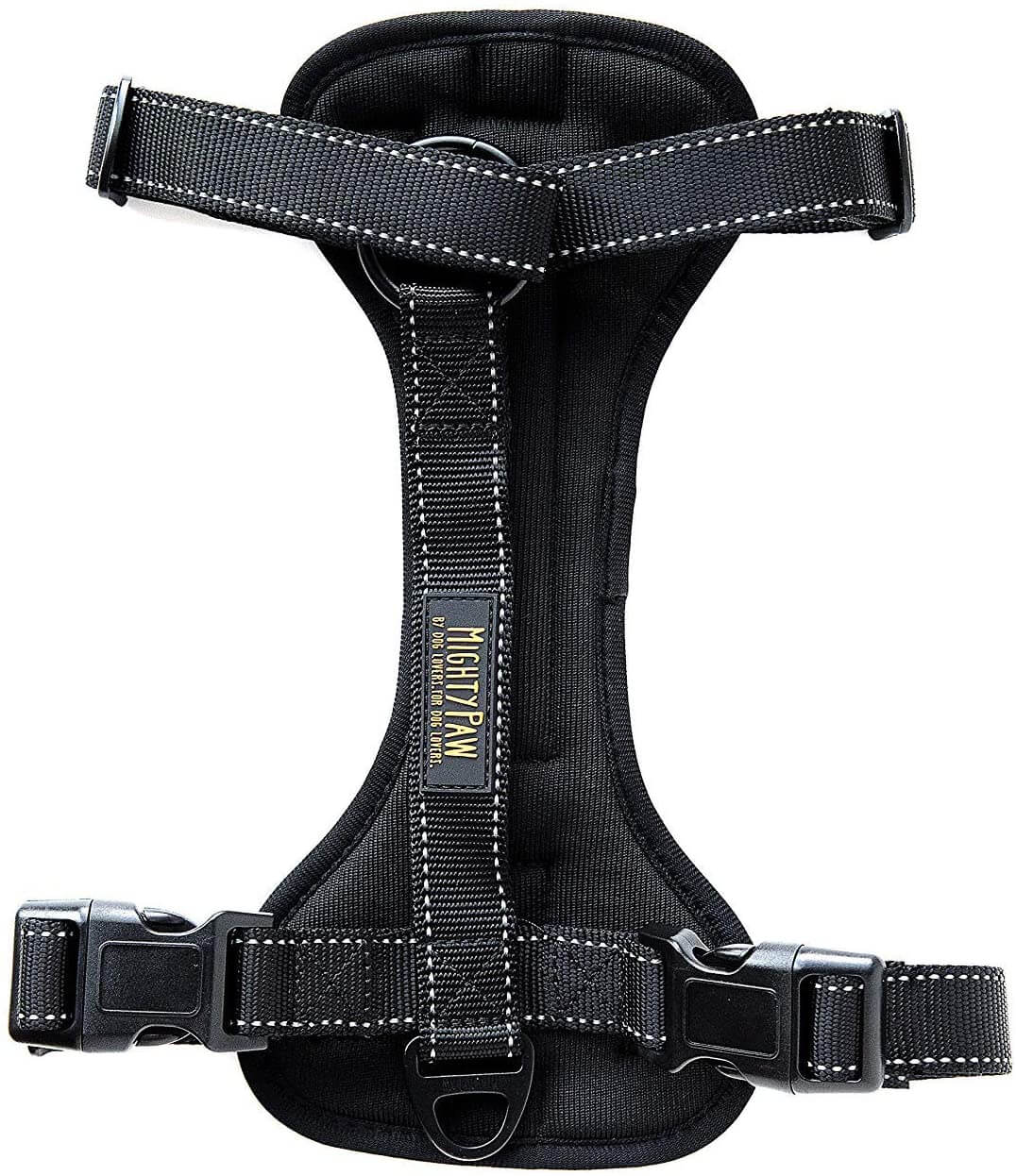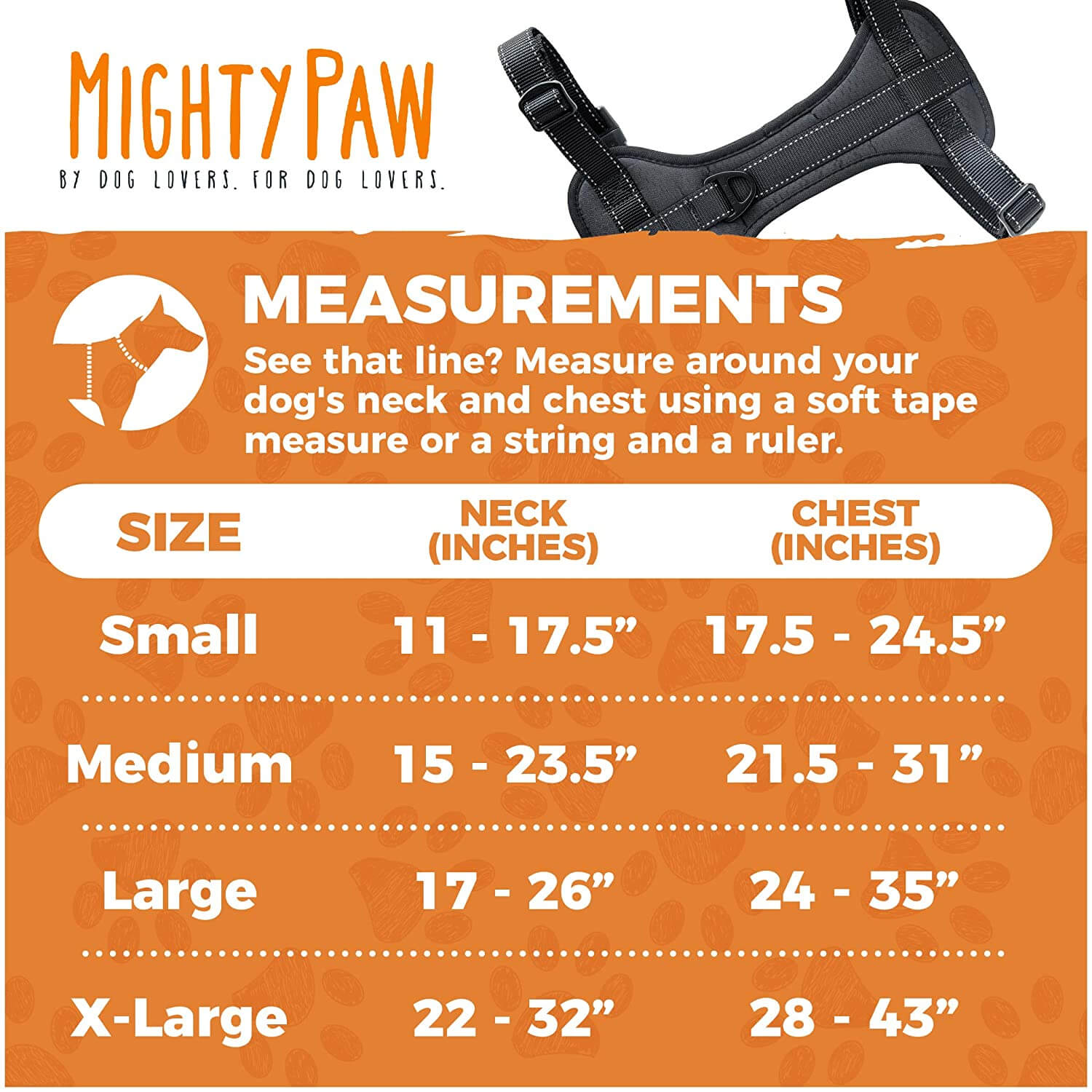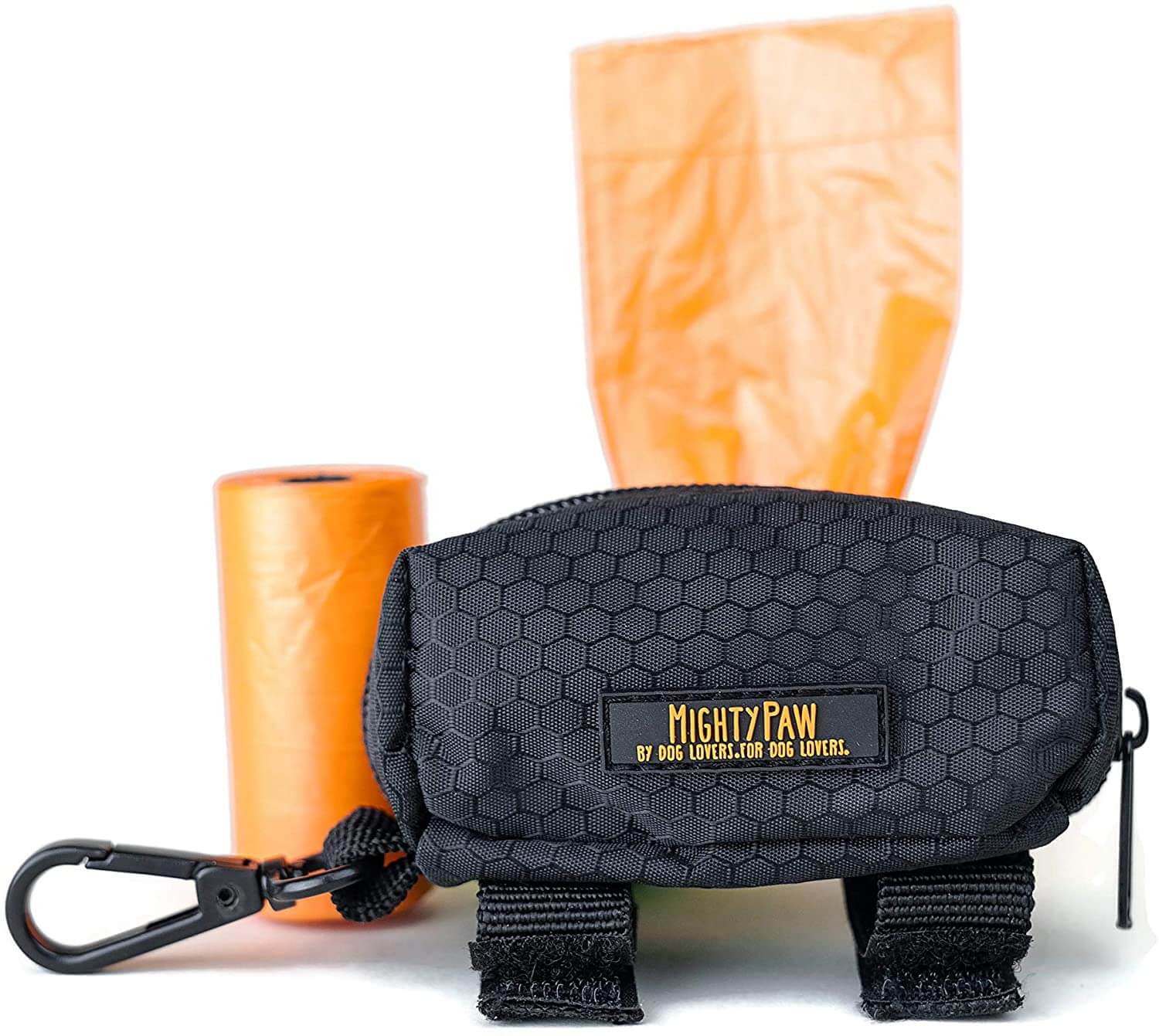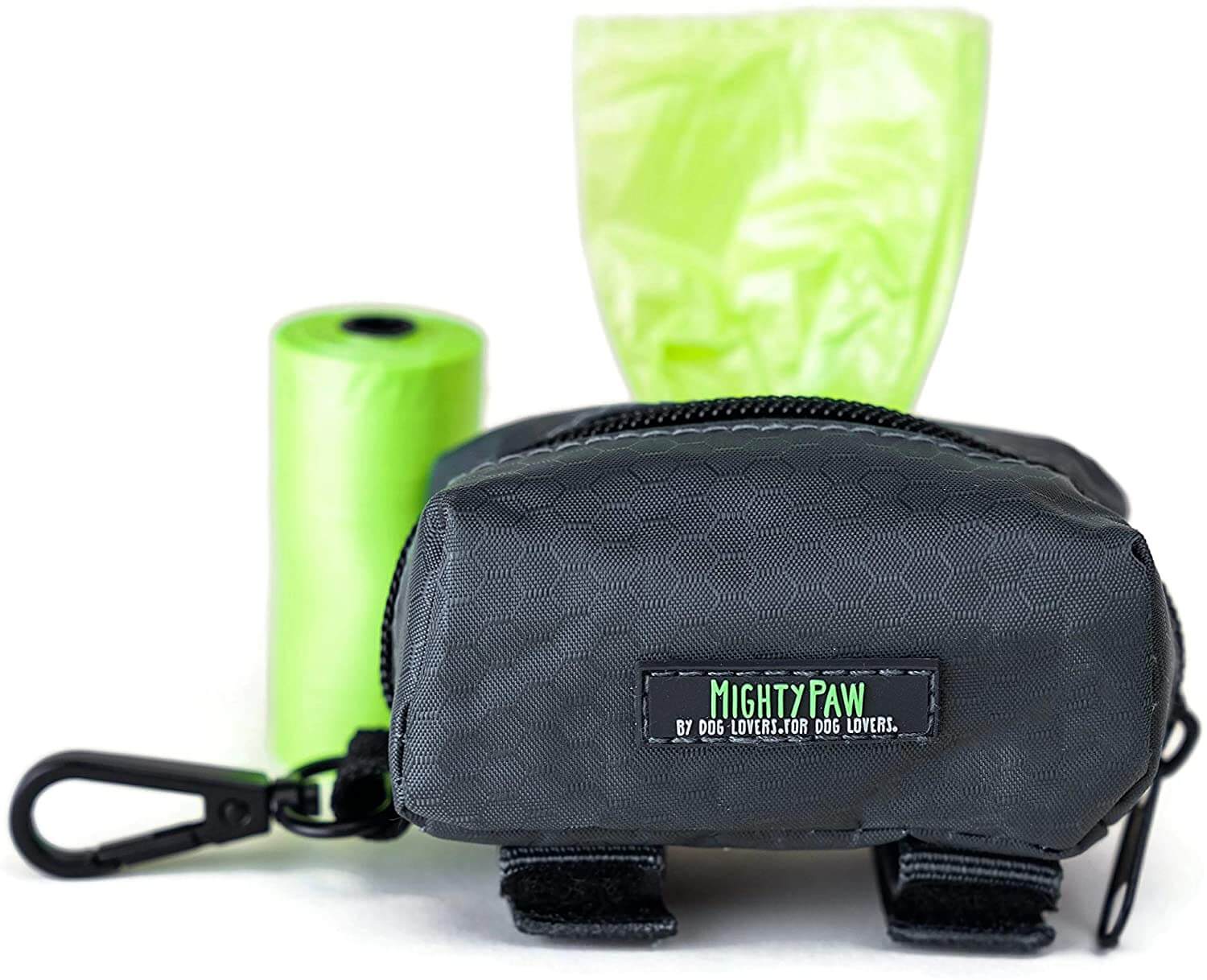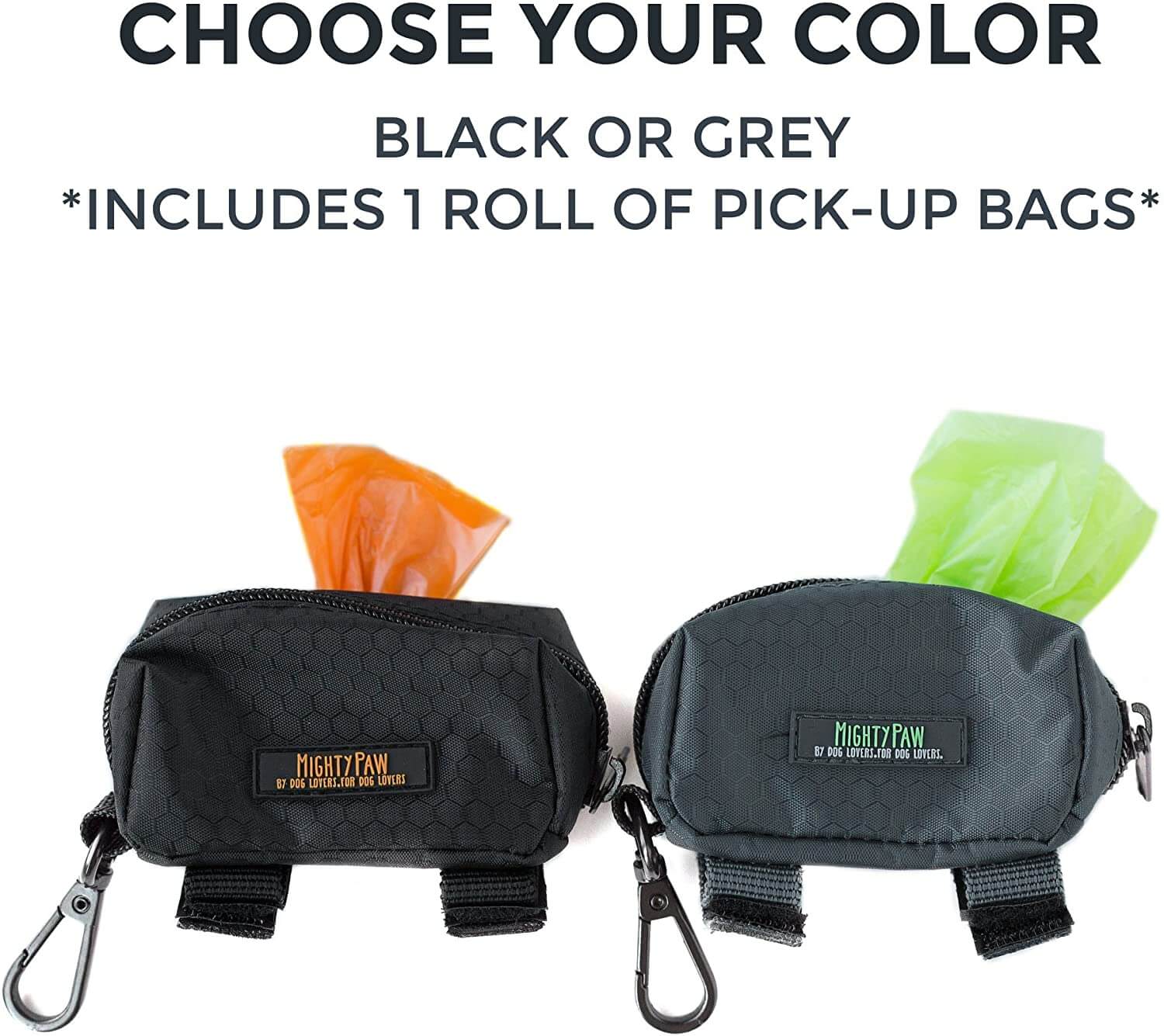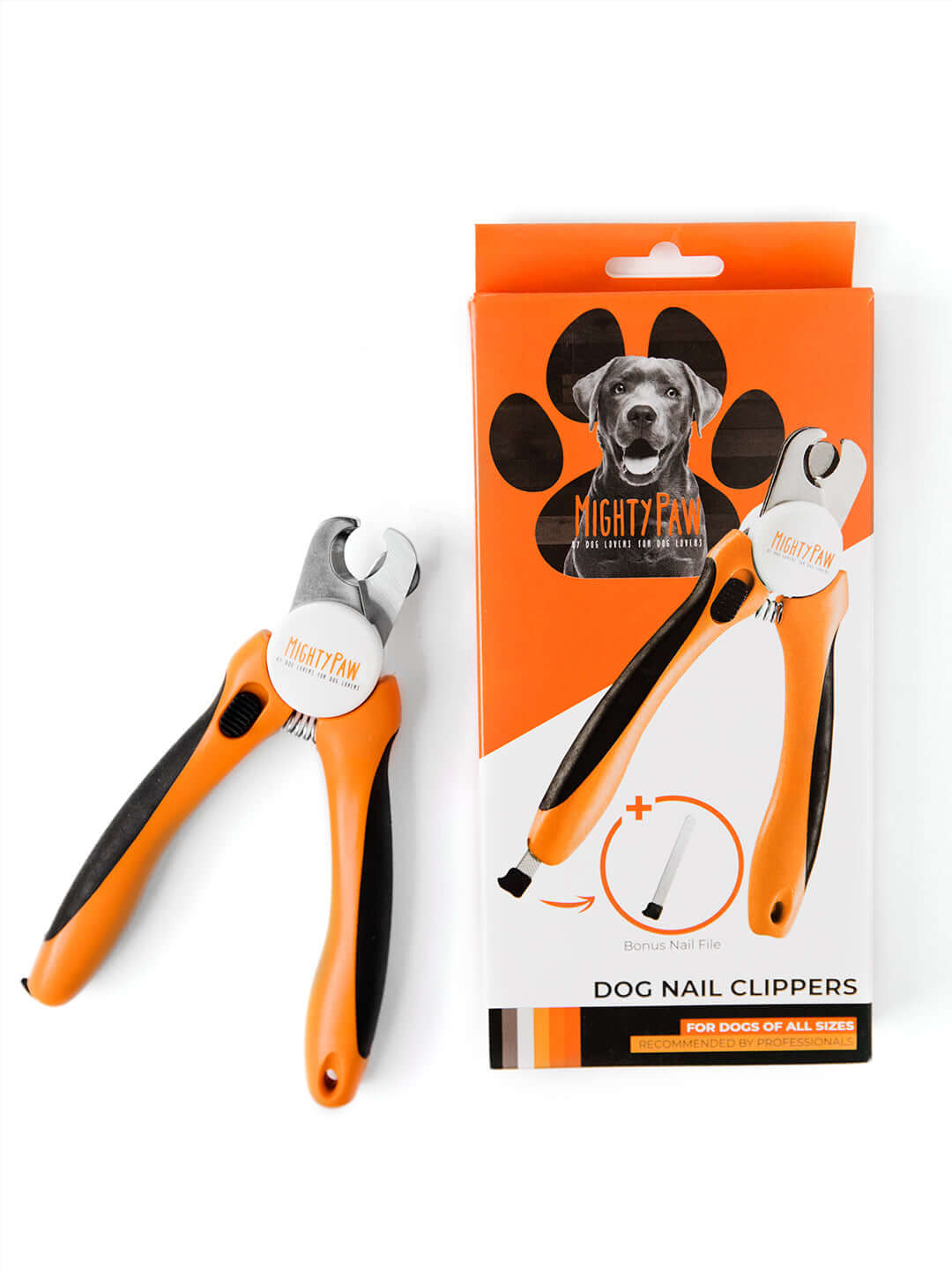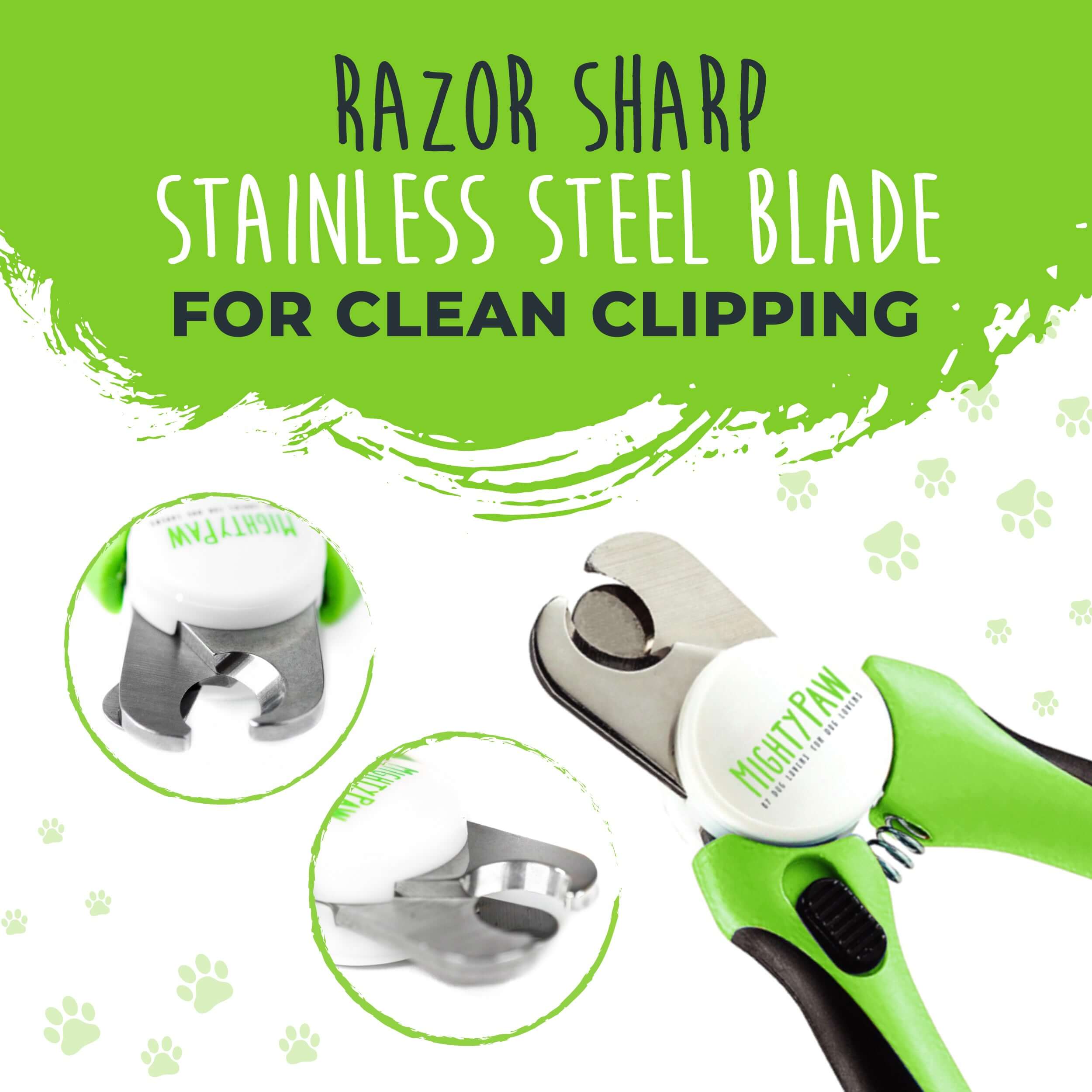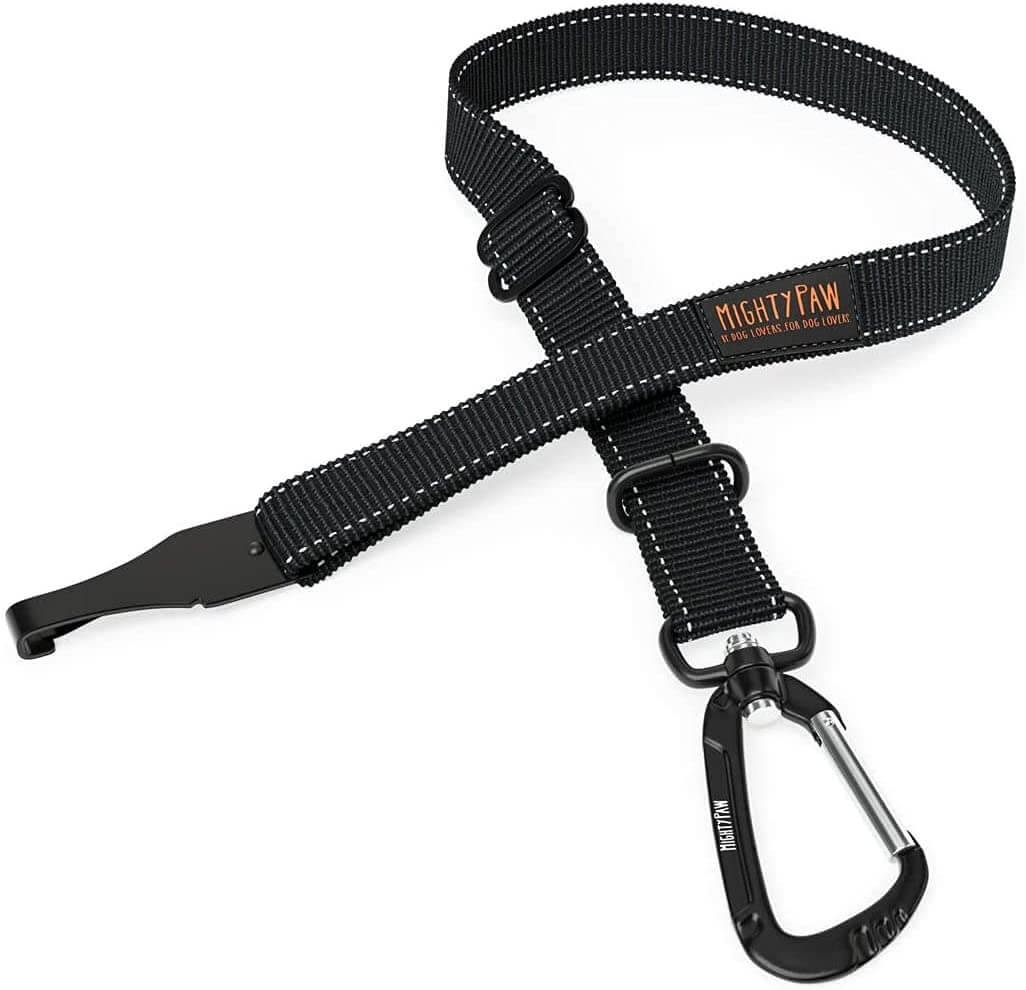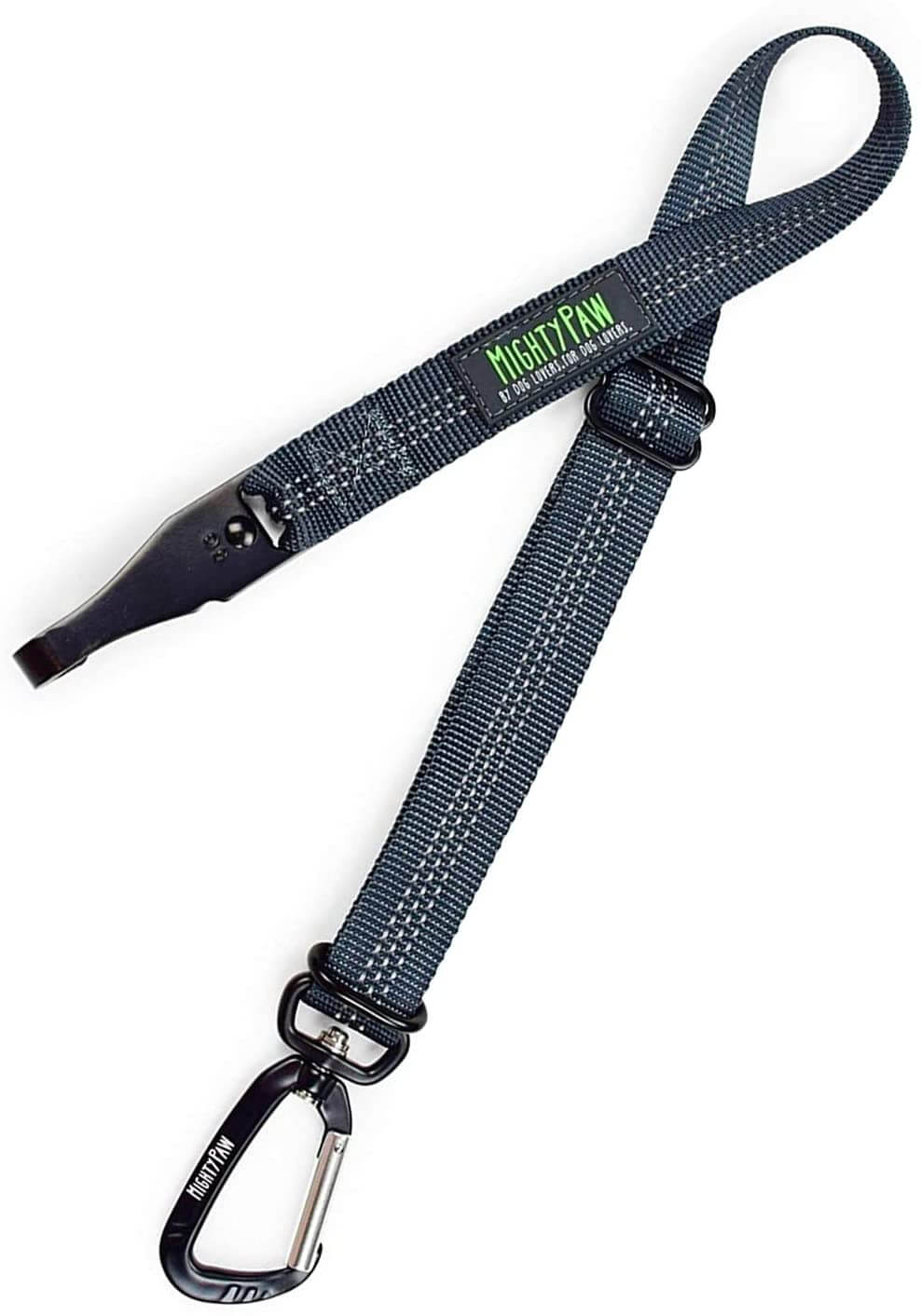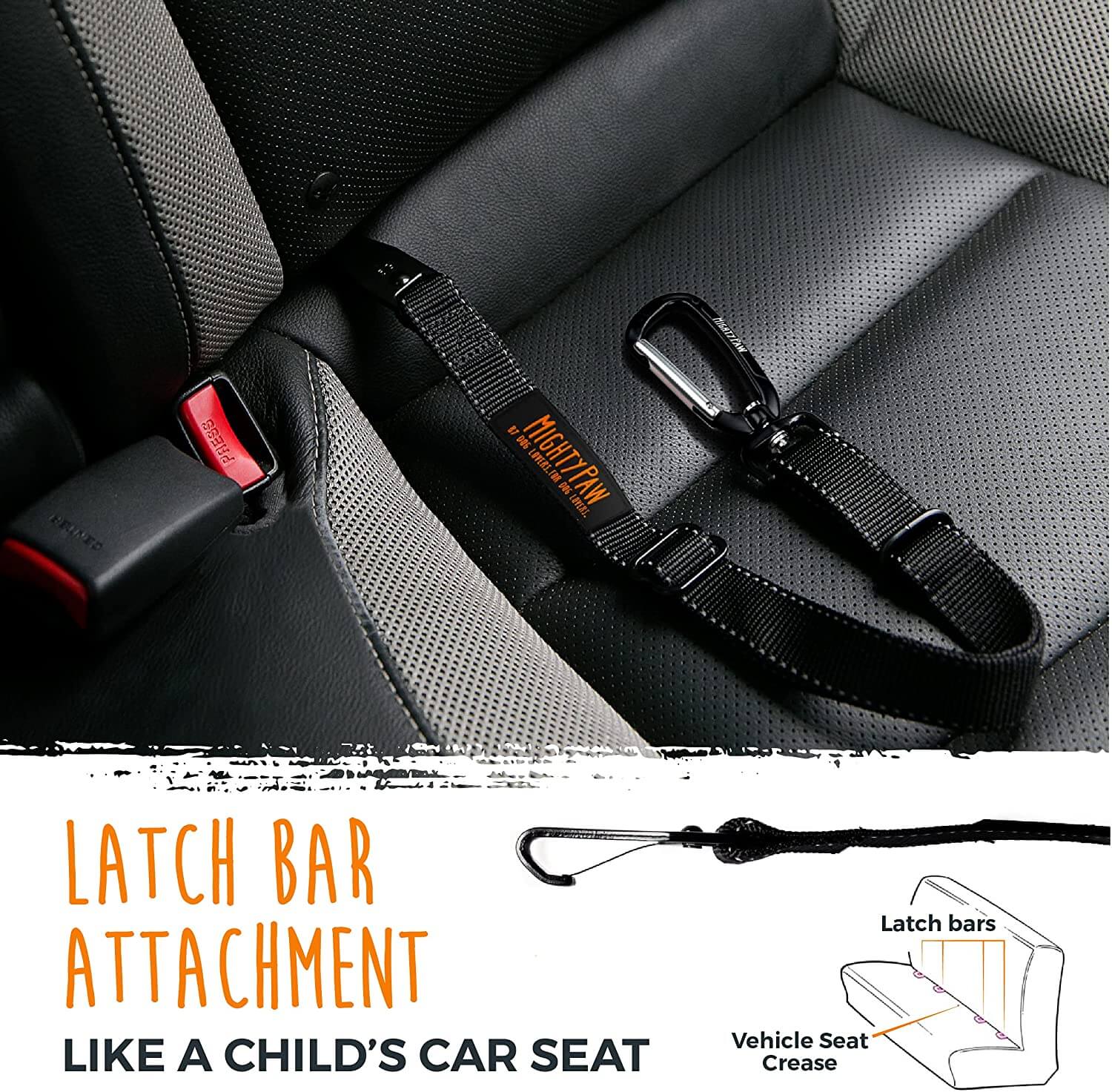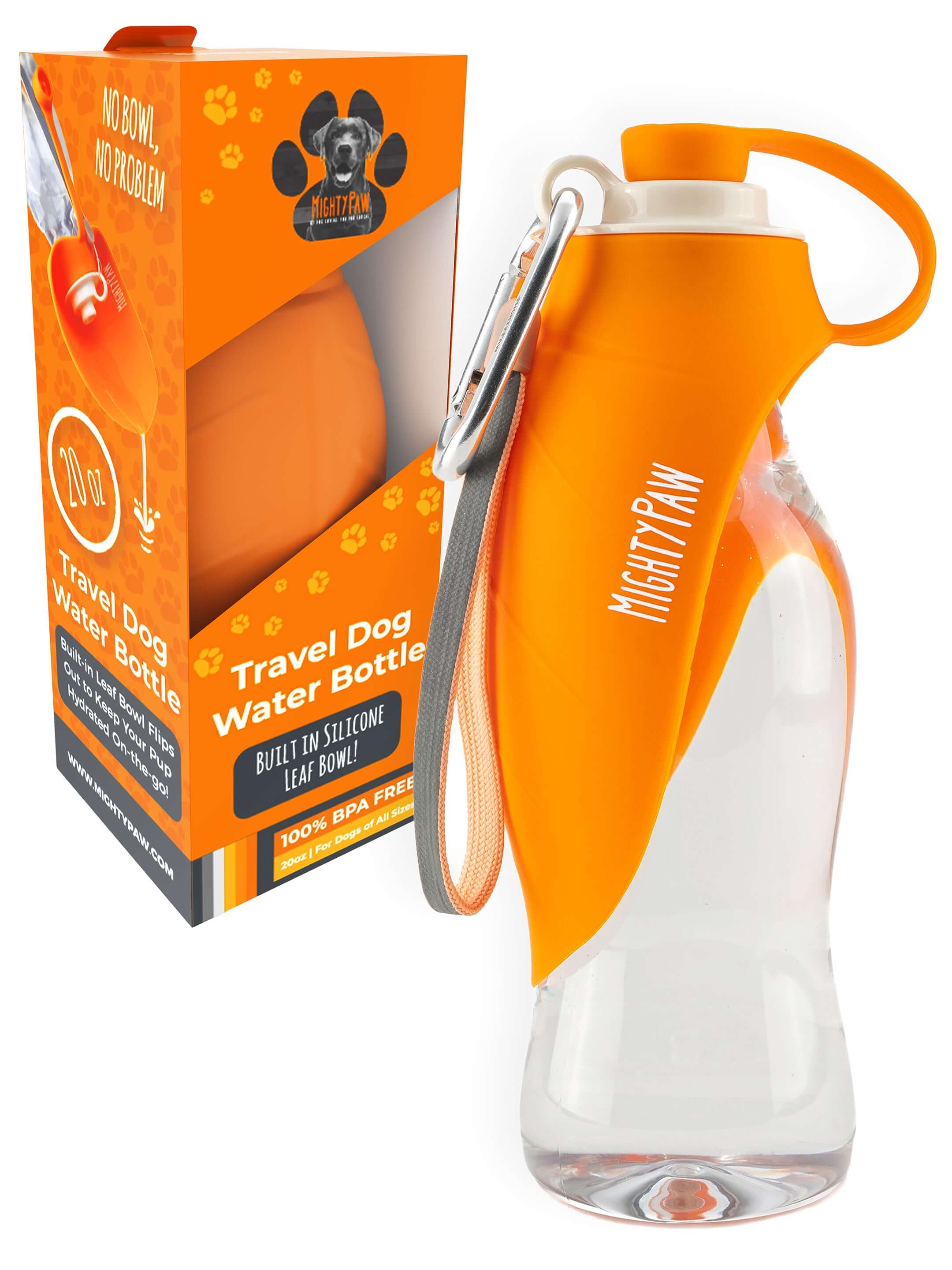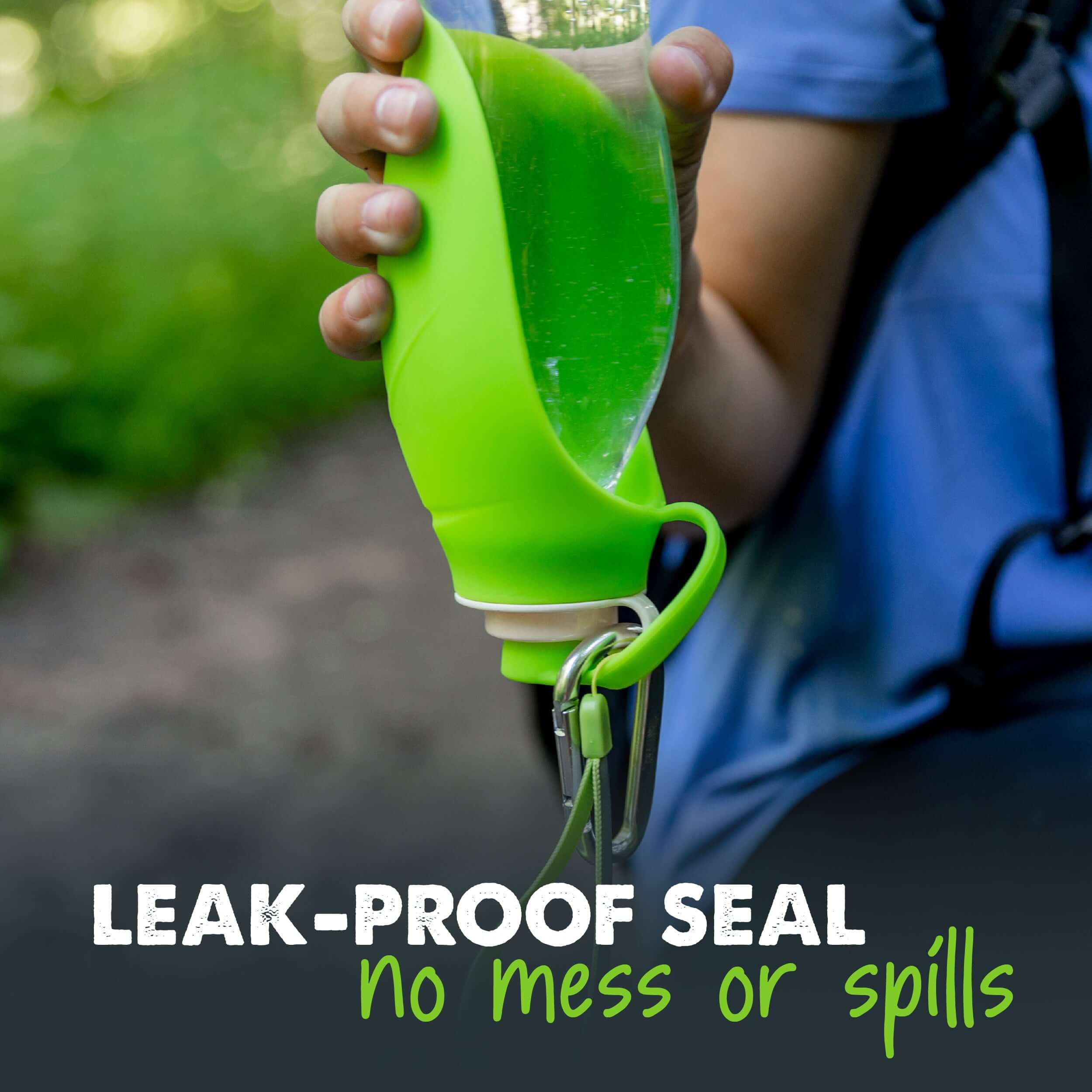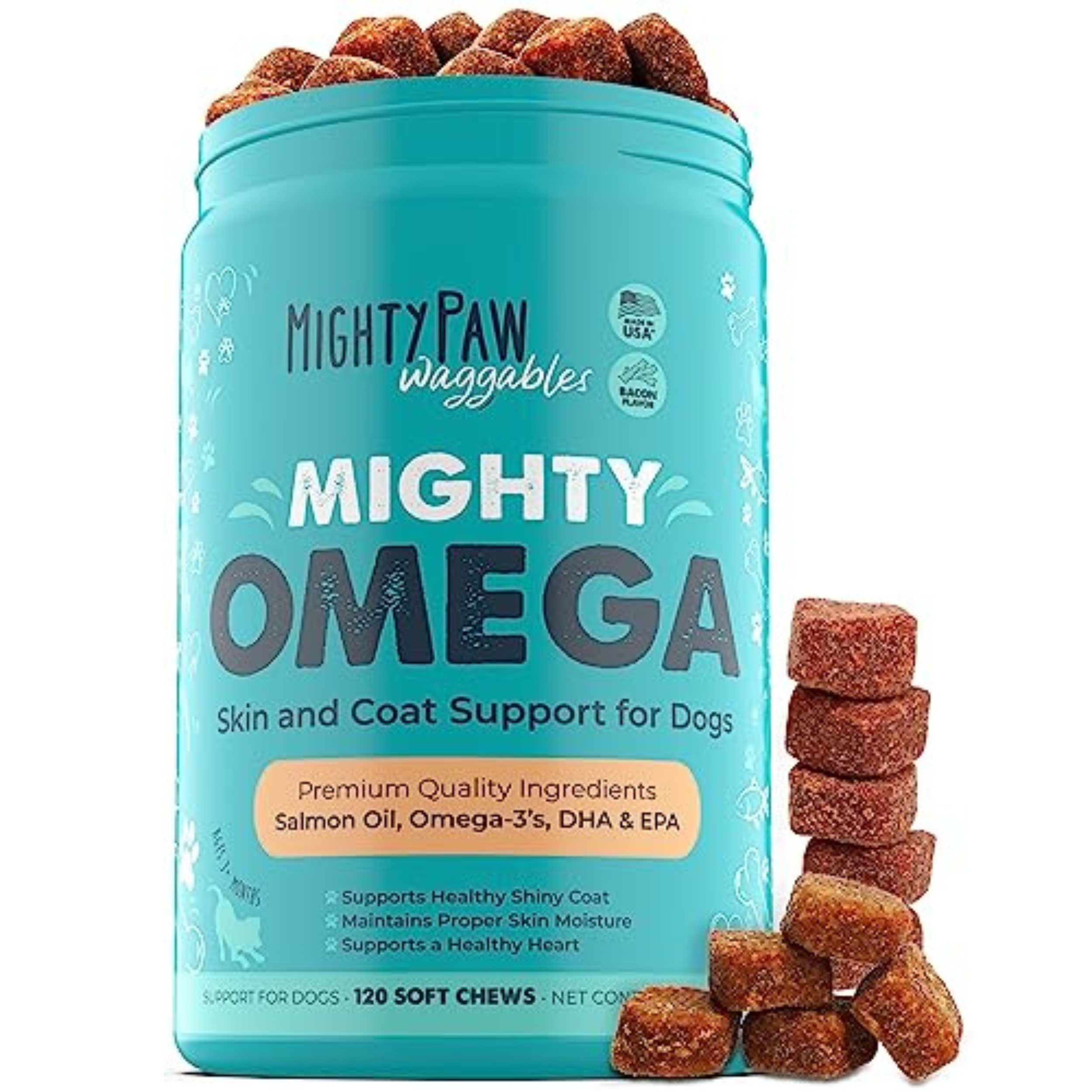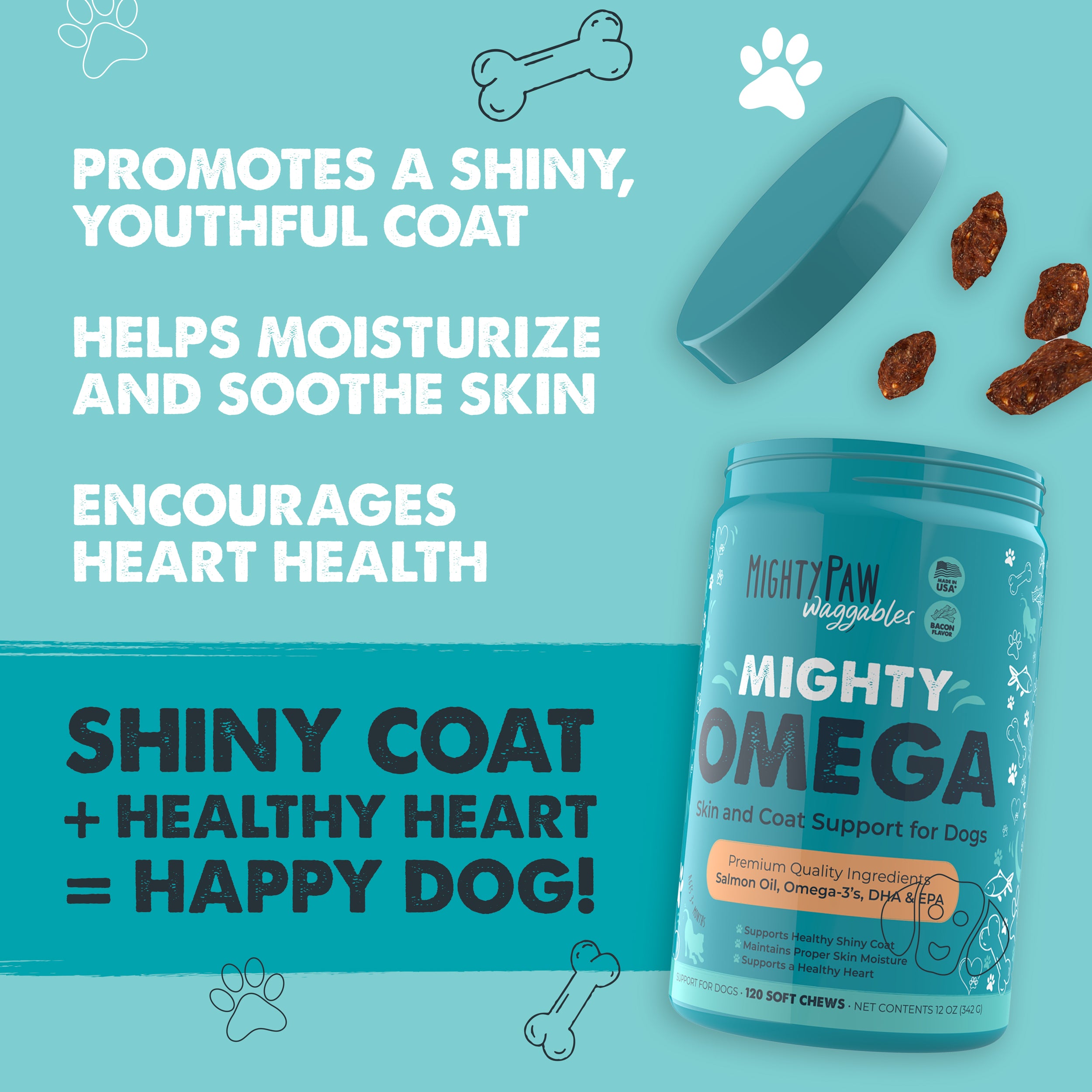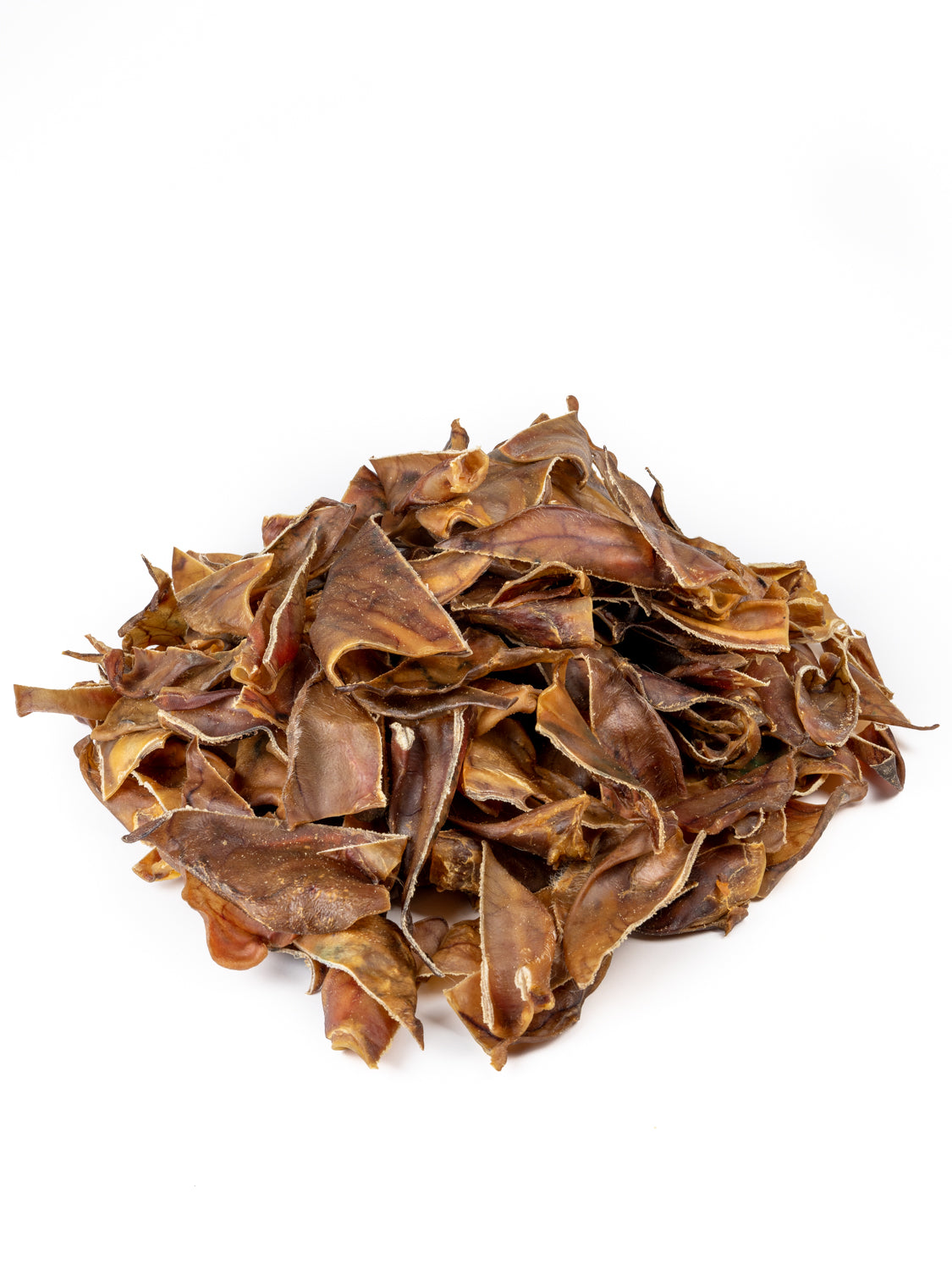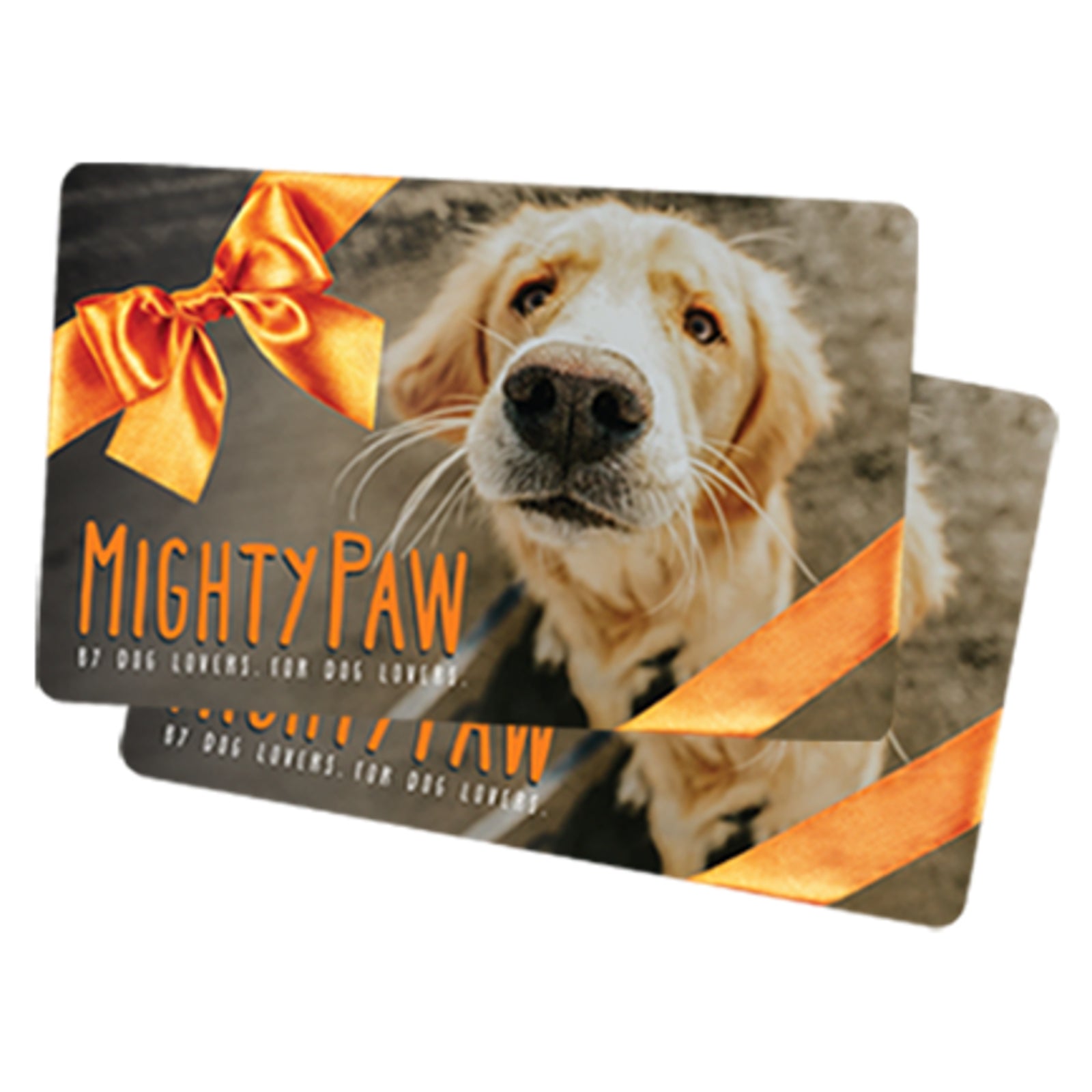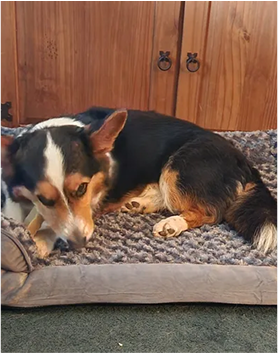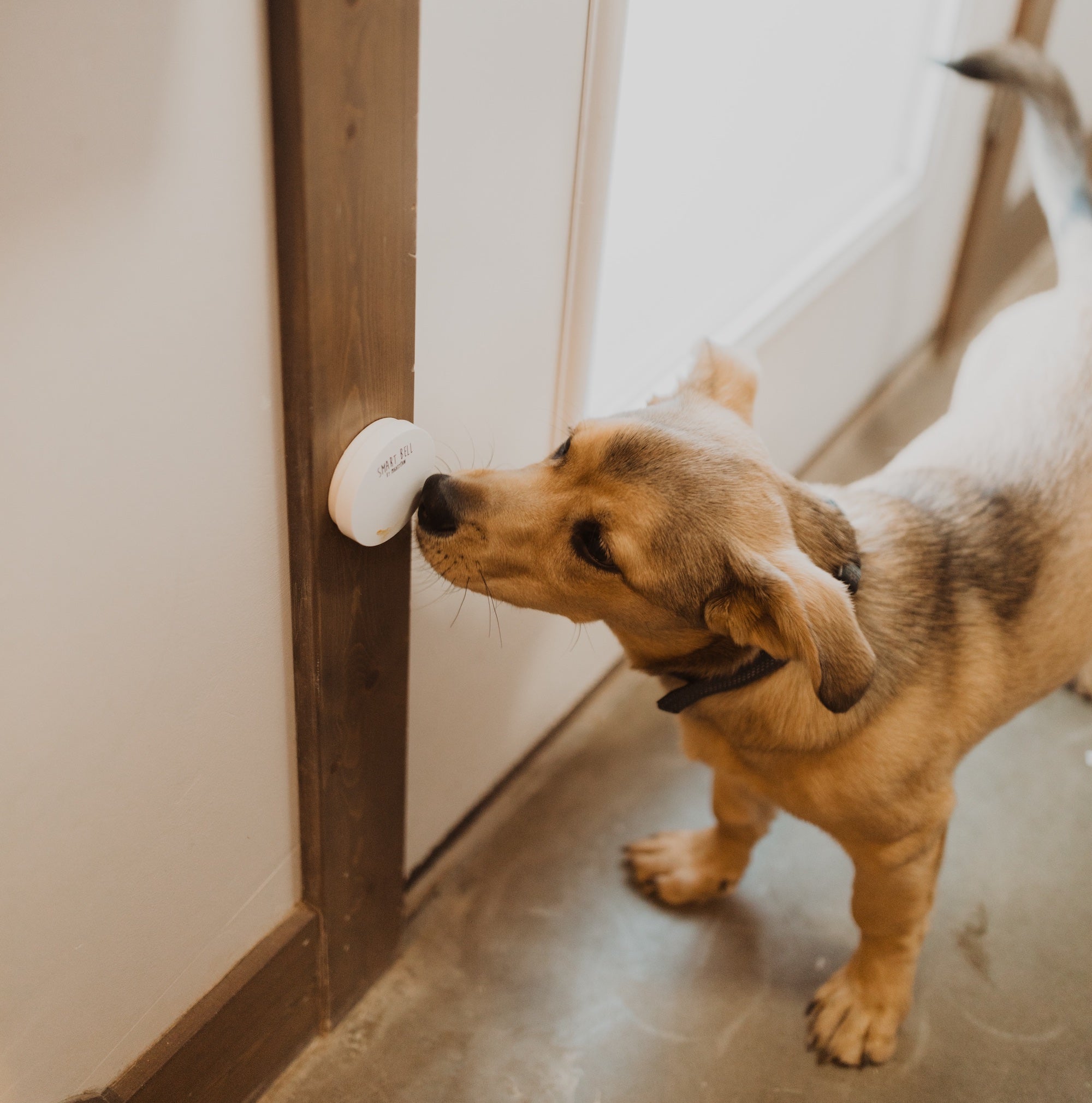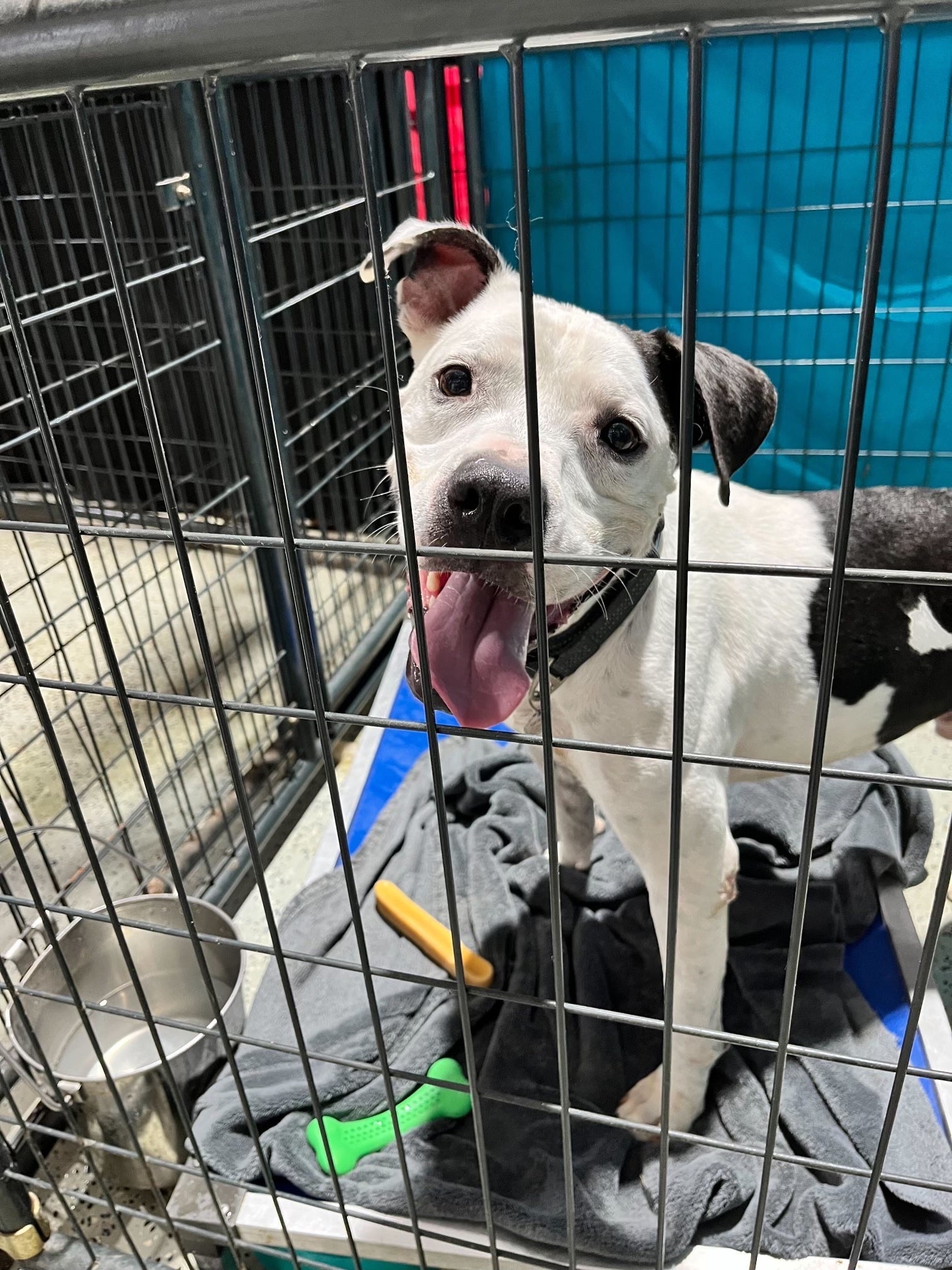As dog parents, we often wonder how the arrival of cold weather impacts our dogs -- and the outdoor exercise they need and want.

At Mighty Paw, we're big believers in getting outside with our dogs for exercise and happy adventures whenever and wherever we can. It's a pretty safe guess you and your dog wholeheartedly agree!
Cold weather and concerns about its effect on dogs certainly complicates outdoor plans this time of year. That's why we've rounded up answers to the most frequently asked questions about cold weather, keeping dogs warm, and how to know what works for your individual dog in cold temperatures.
Starting with the first, fundamental question:
1) How cold is too cold for dogs?
For most dogs, temperatures above 45 ºF when you're out and about are generally fine. When temperatures drop to the mid-thirties to 32 ºF, you should pay close attention to how your dog is weathering the cold during an outing. As temperatures continue to drop below 32 ºF hypothermia and frostbite are extremely serious concerns.
That cold-weather focus is even more critical for pet parents with cold-averse dogs who may be at a greater health risk at lower temperatures. Talk to your vet and research how your pup’s size, breed, age, coat, or health criteria contribute to cold weather safety.
It's not just the numerical temperature to pay attention to in winter weather.
More than just the air temperature determines if your dog is uncomfortable in cold winter months. Wind chill is a big factor since a stiff wind can whip through your dog's coat and penetrate its normal insulating barrier, especially for dogs with thin coats. A strong wind chill factor can lower the actual "feels like" temperature significantly.
Damp or rainy cold weather can also make your dog uncomfortable, especially if it's drizzling or snowing. Even for dogs who love the winter months, hypothermia is a real concern during winter play activities in extreme temperatures.
What else to be aware of to protect your dog in low temperatures?
- Dampness, snow, rain, anything that makes your dog wet are all factors that negate the insulation your dog's fur usually provides. A damp or wet pup can feel cold even in milder temperatures.
- Cloudy winter days without the warmth of sunlight can also make your dog feel colder without the warming help of the sun in winter weather.
- Moving quickly helps generate warming energy. If your dog - or you - is walking slowly because of the cold, you're both likely to feel even colder.

2) Which types of dogs are more affected by cold weather?
Some dog breeds and breed mixes are more cold tolerant, even happy, in wintry weather.
Usually they are dogs whose ancestors originated in northern climates with consistently colder conditions. These dogs tend to be double- or even triple-coated. Breeds or breed mixes such as Samoyeds, Chows, Pomeranians, Huskies, and Malamutes are among the dogs built to be frigid temperature-friendly.
In the double-coated and water-resistant category are Golden Retriever types, while Labs are double-coated and water-proof. You can usually count on them to be good walking buddies on cool, rainy days!
If you have one of the many cold averse dogs like a Boxer, Pittie, Greyhound, or other smooth-coated, short-haired type pup, they’ll be much happier with a cozy sweater or coat when temperatures drop.
Small breed dogs are much more at risk of getting too cold than larger dogs.
For small dogs, their proportion of more body surface and potential heat loss to less body mass and potential heat retention makes it harder to stay warm.
If your dog happens to be a Dachshund or Doxie mix, you already know that short-legged, low-slung dogs tend to be especially susceptible to cold. They're closer to the cold ground, snow, and puddles, and can quickly become seriously uncomfortable in cold, damp weather.
It's so prevalent it has a name: wet-belly syndrome. That's when your dog's past experience with a wet or cold tummy, paws, and legs results in that "nope, not budging" glare when you suggest a walk in not-great weather.
Age and general health can make dogs less tolerant of colder temperatures.
Temperatures that are fine for healthy dogs and adult dogs can be much riskier for sick dogs, young puppies or many senior dogs who may have slower metabolisms or stiff joints. Stay extra focused on keeping your more cold-sensitive dog safe from exposure.

3) What are signs my dog is too cold?
The best way to be sure your dog is safely within his or her cold weather comfort zone is to pay close attention to your pup's behavior and body language signs.
What to watch for in your dog in cold weather...
- Shivering
- Acting anxious, hesitant
- Whining
- Slowing down, looking at you plaintively
- Retreating or searching for a warm location
- Holding up one or more paws
If your dog shows signs like any of the above, it's time to head home and warm up as quickly as possible. Even if it's a quick trip back, do your best to lend some warmth or insulation to your dog. Scoop up your small dog for a ride home inside your coat, or for a larger dog, wrap an extra layer of a piece of your clothing around your dog for the walk or run home.
4) Does cold weather affect arthritis in dogs?
Yes - just as in humans, cold temperatures can exacerbate the pain and stiffness of arthritis in dogs. It's not just your imagination that cold and damp weather make your dog's arthritis or pre-arthritic/post-injury stiffness worse. And it's not only senior dogs who are affected.
At any age, whatever your dog's severity of joint issues, your pup can be adversely impacted by cold temperatures.
Why cold temperatures bother your arthritic dog
- Cold temperatures reduce the supporting fluid around your dog's joints by thickening it, making joints less lubricated and mobility more challenging.
- Cold temperatures cause your dog's blood vessels to constrict and reduce blood flow throughout your dog's body, causing joint stiffness, inflammation, and discomfort.
- Cold temperatures trigger your dog's muscles to contract, in a natural attempt to preserve body heat, resulting in tighter, stiffer joints and more strain on already challenged joints.
- Cold temperatures tend to reduce your dog's activity, which can increase stiffness and pain. Conversely more activity lubricates joints and helps keep them fluid.
Knowing cold weather's physiological effect on vulnerable dogs, it's worth thinking about keeping your dog warm indoors as well. Especially if your dog is arthritic, or happens to be a cold-sensitive type like a Greyhound or a Dachshund, an extra blanket or a sweater can provide welcome comfort.

5) How can I keep my dog safe and exercised in cold weather?
What are adventurous, exercise-conscious dog parents and dogs to do during a cold winter? Here are a few ways to balance cold weather safety and comfort with proper exercise in cold climates:
Bundle up to keep dogs warm.
With weather condition criteria and your dog's individual cold tolerance profile, be prepared to bundle up accordingly to keep your dogs warm in winter! You know your dog and your dog's different levels of comfort in various conditions. It's a good idea to have outerwear on hand ranging from light to heavy, including some waterproof wear, to keep your pup warm and safe whatever the weather.
Take short walks, more often when it's too cold for dogs outside.
When temperatures drop, try keeping your outings shorter and more frequent to keep your dog within the comfort range on any given walk.
Exercise indoors -- at home and away.
When it's just too cold for anything but a super fast potty break, exercise indoors with your dog! If you have a long hallway at home, try a good game of fetch. Most ball-loving dogs will happily chase and return with the ball endlessly wherever you may be playing.
If you have space, you can set up an indoor obstacle course with treats along the way.
Or, head to a nearby mall or large, multi-aisled store (dog-friendly stores like Lowe's, for example) and get in a good walk while refreshing your dog's public manners at the same time! It's a good idea to call ahead on dog-friendly policies if you're not sure. Most malls are dog-friendly in the large common areas and many stores like Gap, Warby Parker, even Apple welcome dogs. Some state laws create exceptions.
Engage your pup with enrichment.
Mental exercise is an important element in having a well-exercised dog. Any time and especially in too-cold weather is a good time to engage your pup in mental enrichment games and play.
A training session or a refresher course practicing cues and tricks your dog already knows is a great way to give your dog both a mental and physical workout.
Try lick pads and slow feeder lick bowls to engage your dog in the mental and sensory exercise of working for favorite foods. Your pup will be both energized and relaxed by the experience!

Pay attention to paws when it's too cold for dogs.
Your dog's paws are in direct contact with conditions on the ground, from cold, icy, or wet winter conditions to scorching hot summer pavement. If your pup can wear dog booties comfortably and keep them on while outdoors, great! Booties or no, make sure your dog's paws are properly groomed and prepped for solid footing and protection in snowy, icy weather.
A good triple protocol to help your pup: trim excess fur around paws and lower legs to keep ice or snow balls from attaching; trim nails to better ground your pup and minimize slipping; and massage paw balm into the pads of your dog's paws for an additional protective, moisturizing barrier.
And if you have a squirmy pup, don’t worry. The engagement lick pad above has suction cups on the back - perfect for attaching to a shower or regular wall while you give your pup that pawdicure.
Increase blood flow with a body-warming massage.
How else can you rev up your dog's body warmth and share some bonding at the same time? Try a full-body massage combining muscle and joint pressure points with long, flowing strokes. You'll de-stress and relax your dog while increasing blood flow that keeps dogs warm from the inside out. And you'll both be getting plenty of "feel-good" endorphins in the process of all that sweet closeness.
The added benefit of balancing exercise and cold weather
Finding ways to exercise safely with your dog in cold weather helps keep your pup fit. That has the added benefit of building more muscle mass, which generates more body heat than body fat and increases your dog's overall ability to stay warmer in cold weather. A positive cycle we can all feel good about!
Here at Mighty Paw, we believe in doing everything with our dogs from all-out adventures to everyday exercise, always keeping it safe, comfortable, and fun. That's why we're committed to providing high-quality products that are safe, durable, and practical for everyday use for everything you want to do together.
Here's to keeping your pup fit, healthy, and happy whatever the weather!
Whether you're enjoying walks and outings in the fresh air of winter, getting mental exercise indoors, or cuddling in the warmth of home together, we've got you covered.

